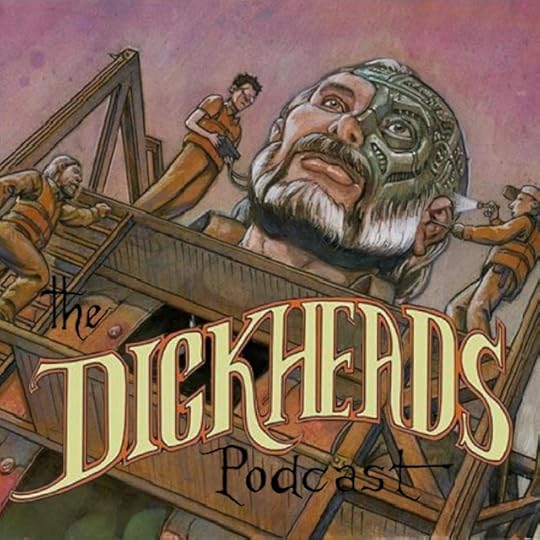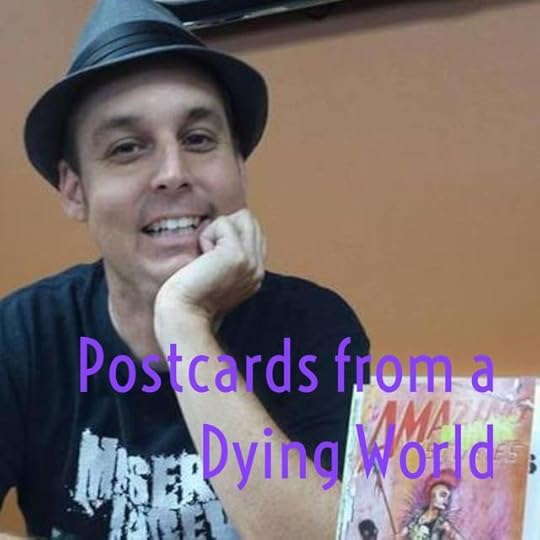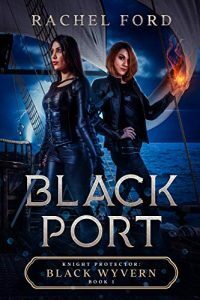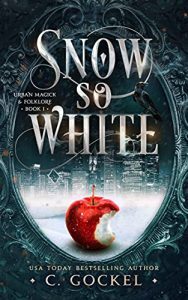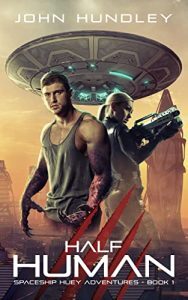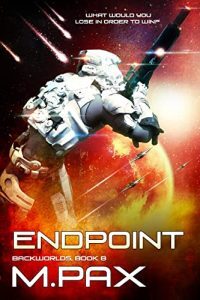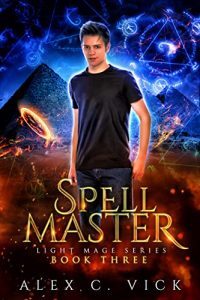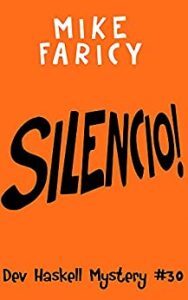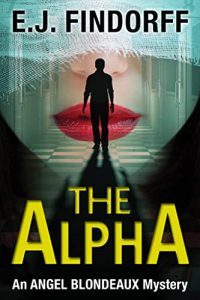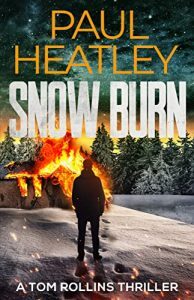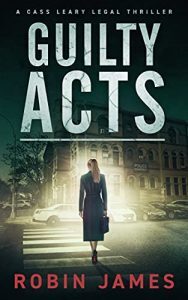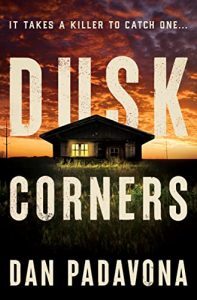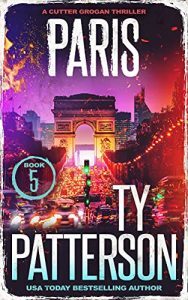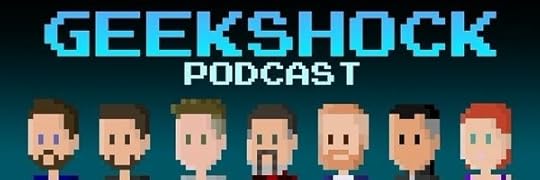Cora Buhlert's Blog, page 30
January 31, 2022
Fancast Spotlight: The Dickheads Podcast and Postcards from a Dying World
Nominations for the 2022 Hugo Awards are open, so I will be continuing the Fanzine and Fancast Spotlights. For more about the Fanzine/Fancast Spotlight project, go here. You can also check out the other great fanzines and fancasts featured by clicking here.
Today’s spotlight features not one but two fancasts: The Dickheads Podcast, which is focussed on all things Philip K. Dick, and Postcards from a Dying World, a more general SFF podcast.
Therefore, I’m pleased to welcome David Agranoff of The Dickheads Podcast and Postcards from a Dying World to my blog:
Tell us about your podcast or channel.
I am involved in two fancasts. First and foremost is The Dickheads Podcast. We are in the 5th and maybe the final year of covering all of Philip K. Dick’s books in publication order. He has over forty novels published and at the time of this interview, we are about to record A Scanner Darkly the novel released in 1977. So, you can imagine we have covered thirty or so novels. It has been a long process. We have also covered various other Science Fiction of the era including most of the Hugo winners of the 60s (some still in the bank), the works of John Brunner, Barry Malzberg, and Norman Spinrad. The last two we interviewed.
We also did tribute panel episodes to his early editors Tony Boucher, and Don Wollheim that included an interview with his daughter. We have done panels on Judith Merrill and Asian Sci-fi in Translation. Interviews with many related guests even experts on time, and physics. We have had Lisa Yaszek the professor from Georgia Tech on 5 times she is one of our favorite guests. One of my favorite Panels was on Phil’s VALIS incident that included his wife at the time Tessa, his good friend William Sarill and Gnostic and PKD expert Ted Hand.
The novel breakdown episodes are the heart of the show. We read the novels, break down the writing and publication history, the story, the themes, and how we would adapt it. We have had some really cool guests on the book episodes. Publisher and crime author J. David Osbourne was great on Three Stigmata of Palmer Eldritch, Stephen Graham Jones on Ubik, and John Shirley is coming on A Scanner Darkly. I am super proud of the work we have done on Dickheads.It has been a journey, when we started I didn’t know much, now I consider myself an expert.
On my own, I do a podcast called Postcards from a Dying World. In this show, I do whatever I want. I interview more modern authors with new releases like Josh Malerman (Bird Box), Sarah Langan (Good Neighbors) Stephen Graham Jones (The Only Good Indians) and S.B. Divya (Machinehood) for example. I don’t just do authors on this show. I have interviewed Astronomers, punk rockers, basically anything I want. I have also done panels on Hong Kong cinema, Richard Matheson, best horror novels, and short stories.
Who are the people behind your podcast or channel?
Postcards is just me. As for Dickheads, it was originally my co-host Anthony Trevino’s idea. He and I honestly met when author Cody Goodfellow (Unamerica) invited us in 2014 to counterprotest the Westboro Baptist church. He was going a pro-Cthulhu counter-rally with signs and bullhorns. It was hilarious. Anthony and I ended up talking and realizing we had similar tastes. A year later I asked Anthony to write a novel with me, that novel is coming out this year from Grand Mal press called Nightmare City.
The other co-host Langhorne J. Tweed is one of my most trusted readers. The Tweeder and I have been friends for many years and he is the best at giving feedback. He is a stay-at-home Dad to a host of shitty chronic issues so he handles ALL of the editing, uploading, and grunt work. He is the MVP of the show in many ways. We intended to write a novel together, we developed the idea together but due to health issues, I ended up writing it.
My role is the researcher. I research all the background on Phil and the novels. I am the one that has dug through his papers at Cal-state Fullerton, visited his childhood homes and I find the guests. Anthony is mostly the hot-take machine.
Why did you decide to start your podcast or channel?
Anthony had decided to read all the PKD books in publication order. He got 5 books in and started looking for a podcast. If he looked a little harder he may have found Evan Lampe’s read-through or the episodes of SFF Audio but thankfully he didn’t. He posted online “Why isn’t there a PKD podcast called Dickheads?” Langhorne and I both responded that was a great idea. At first, I said, “All I want to do is read the books and talk.” Anyone who knows me, knows that wass BS, when I dive into something I always go deep.
Even after the first couple of episodes, I expected us to have a dozen listeners tops. For one thing, we are brutally honest. If we think a book sucks like our infamous hated of the early PKD novel Cosmic Puppets we don’t sugar coat it. It took a while but between our YouTube channel and soundcloud we have many episodes that have hundreds of plays, and we are super grateful about that. We have some great loyal listeners who are stoked when we drop an episode. I know those are not the biggest numbers but for a book podcast about a long-dead author. The numbers are big for us.
That is awesome because that was not the intention at the start. We are three good friends who like to debate movies, books, and media. The intention was to just have fun doing that and learn about PKD so we could apply it to our own fiction.
What format do you use for your podcast or channel and why did you choose this format?
We use the same format for all the book episodes. PKD news, writing and publication history, story breakdown, Review, and themes, how would we adapt it, final thoughts, and then each episode we make a Dick-like suggestion. That can be books, movies, video games, or whatever.
For panels, I like to think of it as moderating a panel at a con, which I have done many times. It is important to involve the whole panel. I keep track of who has been quiet, who is talking a lot. I normally have very detailed notes prepared for interviews. If you check out our Norman Spinrad episode the interview is hilarious, He was very angry about the technology and I think he expected me to be a PKD nerd who nothing about his work. He settled when he realized that I am a fan of his work and knew it very well.
The fan categories at the Hugos were there at the very beginning, but they are also the categories which consistently gets the lowest number of votes and nominations. So why do you think fanzines, fancasts and other fan projects are important?
That is how the scene began. If you look back on the history of the scene many of the biggest names from Judith Merril, Fredrick Pohl, and Don Wollheim in New York, or John Brunner and Michael Moorcock in England did zines. In fact, Philip K Dick’s first science Fiction was a comic strip in a zine he did called TRUTH in middle school. I think this category getting a low number of votes may have to do with the reality that these outlets are popular with the most die-hard of fans but novels and movies for example in the entry for everyone.
I think fancasts are important because it is where we teach and pass on the history of the genre. While I would like to think that the early years of the genre were important to others as it is to me I think putting it in people’s ears is easier than getting people to read history books. I think people should read Astounding by Alec Nelva Lee or Divine Invasions by Lawrence Sutin but if they won’t the podcasts become more important.
I think the long-form interview and online panels are great because it gives the fan such great access to writers and historians of the genre. All the great interviews with Lisa Yaszek for example give access that was once exclusive to her students. Coode Street Podcast giving us all the Gary Wolfe, I mean you can’t possibly put a number on how valuable that is for historians of the genre. Imagine if we had a recording of the rap sessions at the Thursday writing groups at Tony Boucher’s house in the 50s or Heinlein’s house in the 40s. Just to hear the voices of Henry Kuttner and CL Moore alone. This generation is recording those voices. That is so great.
In the past twenty years, fanzines have increasingly moved online and fancasts have sprung up. What do you think the future of fan media looks like?
I think podcasts are a smart bet, they are easy to do if you teach yourself the skills. The reality is there will come new media we can’t predict. For all, we know the future of fandom could be creating immersive online conventions and or simulated virtual cosplay.
The four fan categories of the Hugos (best fanzine, fan writer, fan artist and fancast) tend to get less attention than the fiction and dramatic presentation categories. Are there any awesome fanzines, fancasts, fan writers and fan artists you’d like to recommend?
Sure, I have crossed over with many of my favorites. Seth Heasley is my dude over at Hugo Goes There and Take Me to Your Reader. Both are fantastic podcasts. He is smart and brings a really sensitive thoughtful look to the genre. Evan Lampe did full read-throughs of PKD and Lovecraft on his American Writers 100 pages at a time. We had Evan on twice to do the early PKD books, but he had moved on to Lovecraft. Evan is great. He was also a guest on SFF Audio and I love what Jesse does over there. I was on an episode on World of Null- A. Jesse and I disagree constantly I wish our schedules matched up better because I love debating with him.
Hugo,Girl is a fantastic must-listen podcast. Coode Street, I love Joachim Boaz’s reviews (@SFRuminations ) and get lots of books from him. One of my absolute favorite fancasts is Trekking Through Time and Space. It is a podcast hosted by two of my most trusted film critics Jacob Hall and Hoai-Tran Bui. It is a really special podcast where two friends with smart and entertaining takes teach each other Star Trek and Doctor Who. As a fan of both, I enjoy watching HT teach Who to Jacob and he teaches her Trek. It is fun living the discovery over again through their eyes. I look forward to it each week.
I also listen to Anarchy SF, Flash Forward, Androids, and Assets, the longest-running listens for me are Science Fiction Book Review Podcast, and Geek’s Guide to the Galaxy. I hope I didn’t miss anybody.
Where can people find you?
There is a trick to that. The best hub for Dickheads is our Soundcloud page. We are on Spotify, and Apple podcasts but there we are called PKDheads because they didn’t like the name. We suggest following the Soundcloud, and YouTube as they have almost all the episodes. Some of the interviews and bonus episodes are not up on the other platforms. We are on Twitter, insta all that. We could use some more reviews from our fans who dig us.
As for Postcards from a Dying World, I am on all the pod catchers, and I have YouTube channel just under my name David Agranoff. We are as grassroots as it gets so please any help subscribe, re-posting episodes, reviews, comments or links we value it all.
I am most active on Facebook but you can follow me on Twitter.
The Dickheads Podcast:
https://soundcloud.com/dickheadspodcast
https://twitter.com/dickheadspod
Postcards from a Dying World
https://podcasts.apple.com/gb/podcast/postcards-from-a-dying-world/id1524359471
https://twitter.com/DAgranoffAuthor
https://www.youtube.com/user/Veganrevwithzombies/
Thank you, David, for stopping by and answering my questions.
Do check out The Dickheads Podcast and Postcards from a Dying World, cause they’re great podcasts. I’m also a guest on an upcoming episode of The Dickheads Podcast, talking about The Big Jump by Leigh Brackett, which had the distinction of being published as an Ace Double together with Philip K. Dick’s debut novel Solar Lottery.
***
Do you have a Hugo eligible fanzine/-site or fancast or a semiprozine and want it featured? Contact me or leave a comment.
January 30, 2022
Indie Speculative Fiction of the Month for January 2022

It’s that time of the month again, time for “Indie Speculative Fiction of the Month”.
So what is “Indie Speculative Fiction of the Month”? It’s a round-up of speculative fiction by indie and small press authors newly published this month, though some December books I missed the last time around snuck in as well. The books are arranged in alphabetical order by author. So far, most links only go to Amazon.com, though I may add other retailers for future editions.
Once again, we have new releases covering the whole broad spectrum of speculative fiction. This month, we have urban fantasy, epic fantasy, fantasy romance, paranormal mystery, paranormal romance, space opera, military science fiction, humorous science fiction, science fiction noir, science fiction romance, dystopian fiction, YA fantasy, futuristic fairytales, cyberpunk, non-fiction, werewolves, shifters, mages, fae, admirals, culture wars, forbidden love, futuristic Snow Whites, crime-busting witches, crime-busting ghosts, intergalactic backpackers, pirates of the sea and in space and much more.
Don’t forget that Indie Speculative Fiction of the Month is also crossposted to the Speculative Fiction Showcase, a group blog run by Jessica Rydill and myself, which features new release spotlights, guest posts, interviews and link round-ups regarding all things speculative fiction several times per week.
As always, I know the authors at least vaguely, but I haven’t read all of the books, so Caveat emptor.
And now on to the books without further ado:
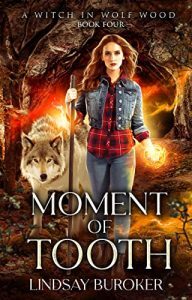 Moment of Tooth by Lindsay Buroker:
Moment of Tooth by Lindsay Buroker:
Morgen Keller’s life has been chaotic since she inherited her grandmother’s old house—and her legacy as a witch.
Werewolves regularly attack her, familiars spy on her, and enemies she didn’t ask for keep lighting her property on fire.
Through everything, she’s been fortunate to have one steadfast ally: Amar.
The lone werewolf is a fearsome fighter, a loyal protector, and he’s sexy in nothing but a magical talisman.
Just as Morgen and Amar overcome most of her problems and officially start dating, trouble from his past arrives in town. The powerful enemy who long ago slew his parents has come to finish off the family.
As strong as Amar is, he may not be able to handle his old nemesis alone. But will he let Morgen help? And is it within her fledgling power as a witch to do so?
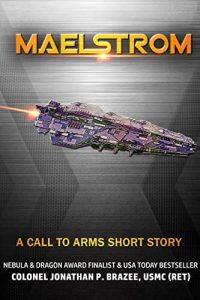 Maelstrom by Jonathan P. Brazee:
Maelstrom by Jonathan P. Brazee:
War came to Capernica on a beautiful Landing Day . . .
Mario Despiri was the son of Capernica’s most famous veteran, and he wanted nothing more than to follow in his late father’s footsteps. But physically disabled as a victim of Moriori Syndrome, that just wasn’t in the cards for him.
When the Wolvic attack the planet, most citizens are hastily conscripted to fight the invaders. But not even then is Mario given a weapon and told to march to the sound of gunfire.
Mario is determined to do his part to help throw off the enemy. But ignored and shunted aside, what can he do?
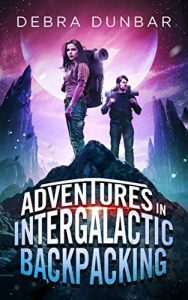 Adventures in Intergalactic Backpacking by Debra Dunbar:
Adventures in Intergalactic Backpacking by Debra Dunbar:
You know what’s worse than being abducted by aliens, poked and prodded, then dumped on a weird planet with nothing but a bag of food pellets and my backpack?
Having to go through all this with Ethan.
He’s the walking stereotype of a rich, privileged dude-bro, and it was the worst day of my life when the aliens grabbed him along with me.
I need to learn how to survive, to find food and shelter and not get eaten by the monsters that roam this place. I need to figure out where I am, and why these aliens keep showing up to gawk and throw canned tuna at me. And I need a cup of coffee. I seriously need a cup of coffee.
Most of all, I need to not kill Ethan, because although he’s a jerk, at least he’s a human jerk. Besides, I might need to trade him for a spaceship ride home.
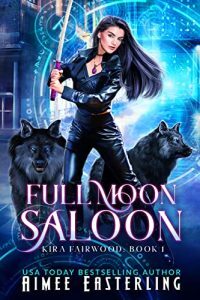 Full Moon Saloon by Aimee Easterling:
Full Moon Saloon by Aimee Easterling:
A fox making a name for herself in a wolf’s world.
I’m Kira Fairwood — fox shifter, bane of the werewolves, and also their employee. My job isn’t just a paycheck. It’s a way to ensure my unborn niece’s heritage won’t work against her when she grows up.
So I dive right in to bag a hot alpha werewolf who’s using his bar as a front to murder human women. Unfortunately, I soon discover Thom is being framed.
Then the true murderer begins to hunt the hunters. Can I keep my family safe by continuing to follow orders like a wolf?
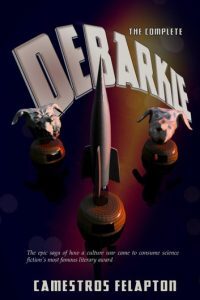 Debarkle: Saga of a Culture War by Camestros Felapton:
Debarkle: Saga of a Culture War by Camestros Felapton:
The collected version of all three volumes of Debarkle: Saga of a Culture War. In 2015 a major controversy broke out in the world of science fiction’s most prestigious literary award. Debarkle traces the history of this controversy, examining the roots and consequences of the events.
A secret order, hunted by two rival kingdoms. A network of spies and saboteurs.
Valia Iceborn is the daughter of two worlds, and a servant of none: her mother was a Northern outlaw and her father a Southern deserter. She grew up in the wilds of No Man’s Land, but the open sea is her home. She swears no allegiances, lest they be to gold.
Knight Protector Portia Daysen is a loyal of daughter of the empire. She goes where she’s told, and does what she’s told. When the empire sends her to the bustling city of Black Port to ferret out a mysterious secret order threatening stability in the region, she doesn’t think twice.
Plunged into a world of deceit and derring-do, where no one is who they pretend to be, and nothing is at it seems, Daysen’s investigation leads her to Valia’s dock.
And crossing sabers with the most formidable – and charming – foe of her career might be the last mission Knight Protector Portia Daysen ever takes.
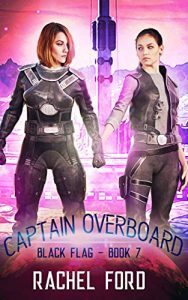 Captain Overboard by Rachel Ford:
Captain Overboard by Rachel Ford:
Some days, it’s sink or swim.
Fresh off a successful mission, everything looks like it’s going swimmingly for the crew of the Black Flag. Right up until Captain Magdalene Landon-Ellis vanishes on her way back from a meeting with the admiralty.
With few clues about her disappearance and Union leadership proving as tightlipped as ever, Chief Engineer Katherine Ellis-Landon and the crew of the Black Flag decide to take matters into their own hands.
They’re going to figure out what happened to Maggie, and they’re going to get her back. Come hell or high water.
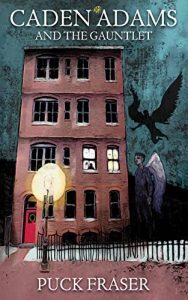 Caden Adams and the Gauntlet by Puck Fraser:
Caden Adams and the Gauntlet by Puck Fraser:
Caden B. Adams is a normal 13-year-old boy living in Beacon Hill. Or is he?
Winged Giants and a menacing creature who calls himself “Beloved” lurk in the shadows of Beacon Hill where 13-year-old Caden Adams lives in a brownstone shrouded by snow flurries in the heat of August. His father, a NASA astronaut, has disappeared, and his mother, a renowned MIT scientist, has a secret she won’t reveal.Bullied at school for his psychic ability, a mark appears on Caden’s bedroom wall – a lopsided asterisk. The symbol represents more than a life-or-death challenge; it is a gauntlet of worlds that need Caden’s help.Time is running out, as Beloved gains strength with every passing day. And Caden must decide for himself if he will answer the call of *be.
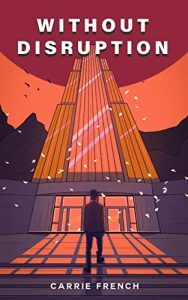 Without Disruption by Carrie French:
Without Disruption by Carrie French:
In pursuit of a different life, Harrison leaves everything behind – his family, his community, and even his own name. He can never go back.
Global society is united with a simple guarantee: everyone can achieve stable, lasting happiness for one hundred years in a curated lifestyle that brings them joy. Well… not unlimited joy, just mild contentment. No more, no less.
Every element of life is controlled by Vie – an AI system that is worshipped as divine. She guides members into ‘harmony’ with in-ear alerts, retina screens, and vast, immersive simulations.
Harrison is ambitious and impulsive with a curious habit of recalling hazy memories that never happened. The course of his life is punctuated with hasty decisions, emotional compromises, and genuine attempts to play by the rules.
He’s not only running out of options; he’s running out of time. Is Harrison’s will strong enough to break Vie’s authoritarian hold? Or will he finally learn to settle for mediocrity, just like everyone else?
The threat of ‘eviction’ is looming, and Harrison’s death day might come sooner than he thinks.
Once upon a future-time, in a city of steel, concrete, and Magick, a wicked queen trapped a mighty warrior with a curse …
In the tiny village of Somer, far from the city, Cherie knows nothing of the evil spell. Her home is a safe, Magickal place. The Fae travel freely along its roads, Magickal humans and animals are welcome, and everyone is hidden from the Queen’s sight by Jack Frost, the local ghost, who blurs the Queen’s mirror with snow and ice.
But when Jack’s spell begins to crack, the Queen’s eyes fall on Somer. Nothing will keep her from abducting all of Somer’s Magickals, not even a war with the Fae.
To avert a war, save her village–and herself–Cherie strikes a perilous bargain. Aided only by Jack and her own small Magick, she’ll set off on a quest … If she fails, she’ll lose more than her life.
A retelling of Snow White with Urban Magick, plenty of folklore, and a Princess Charming.
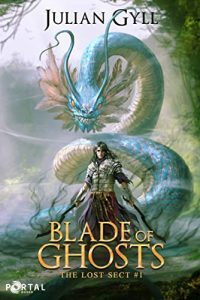 Blade of Ghosts by Julian Gyll:
Blade of Ghosts by Julian Gyll:
The Hollow is dying.
Beset by nightmarish creatures from the caverns below, Jason’s tribe is slowly being whittled away. Only a brave few still stand against the darkness.
Jason dreams of joining the glorious Shadowfront and battling the enemy known only as the Void. But as a lowly Pastfinder, he is denied that path and forced to serve as little more than a glorified scavenger.
It is only when he chances upon the ruins of a long dead civilization that his fortunes change. Jason discovers a forgotten form of cultivation, one fueled by the ghosts of centuries-lost history and powerful, forbidden knowledge.
For the first time in his life, Jason has the strength to join the fight against the shadows.
But if his fellow tribesmen learn of his new power’s cursed origins, the Void will be the least of his concerns…
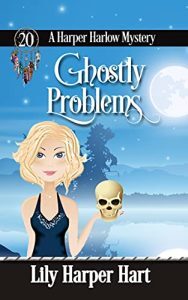 Ghostly Problems by Lily Harper Hart:
Ghostly Problems by Lily Harper Hart:
Harper Harlow-Monroe is settling into married life well. Her biggest problem is her best friend Zander, who is planning his own wedding. That is until a new resident comes to Harper with a poltergeist problem.
Beckham Lighthouse is located in a unique spot, where the lake and the river meet. When a body washes up on the shore close to the building, talk turns to the poltergeist … which they’re having zero luck dealing with.
Harper’s husband Jared, a local police detective, believes they’re looking for a human culprit. Harper thinks her case and his might be connected. Together, they have to dig deep. Things take a turn when Jared realizes that the new owner of the lighthouse is a familiar face from his past.
Debbie Montlake was an ex-girlfriend he had no problem leaving behind. Her appearance in town right when a murder occurs has him rattled, however, even as Harper starts bonding with the woman.
There’s a killer on the loose and a poltergeist locked in a lighthouse. Are the two things connected? Harper is determined to find out, even if she has to ask for help from a witchy friend to get her answers.
Magic is might, and Harper’s group has magic on their side. Survival isn’t a given, however. Everybody is going to have to work together to solve this one, and even then, the answers might be more than anybody can bear.
Last time they met, she promised to kill him. Now their lives depend on each other. Will she have his back … or blow a hole in it?
An outer arm of the Milky Way. Shifter Clifford Crane owes a debt from his past, and payback is taking a job with Half Human Enterprises. It’s a setup. The other new hire is a deadly female alpha – who promised to kill him if he ever re-entered her life.
Heather Felton has been tricked into taking a job with HHE. It’s an eclectic mix of scientists, technicians, and forgotten heroes who want to take down the paramilitary corporation controlling commerce in the human colonies. It’s an ambitious undertaking. It doesn’t seem humanly possible. But she can’t bet against them. They’re only half human.
The SS Huey’s captain has tagged Clifford and Heather for an undercover mission. If they can pull it off, they’ll stop an evil oligarch from supplying THE Corporation with an army of cyborgs. But the clock is ticking – on the time they can stay alive until their cover is blown – and how long they can work together without killing each other.
 The Joy of Hex by Amanda M. Lee:
The Joy of Hex by Amanda M. Lee:
Hadley Hunter is living the good life until a group of authors shows up on Moonstone Bay, and one of them clearly has murder on their mind.
Jasmine Riley was the lone female writer in a male-dominated genre, and she was on top of her game. When she winds up dead in the ditch on the highway outside of the city, suspicion turns to her competition. There’s just one problem … the culprit might be supernatural.
Hadley not only finds the body but is injured in the aftermath, catching a glimpse of a door to another world before losing consciousness. Did the head injury cause her to hallucinate, or was it something more?
Galen taps Hadley to be his partner on the case, convinced that’s the best way to keep her from finding trouble. Unfortunately for both of them, plane doors are starting to open all over the island, and with them come monsters from another world. That means trouble continuously finds them.
Plane doors are forbidden on Moonstone Bay, but somebody doesn’t care about the rules. Hadley is determined to find answers … and she gets help in the form of Bay Winchester, a Michigan witch on her honeymoon with FBI Agent Landon Michaels. Together, they start digging … and find that not all monsters are obvious.
Someone is controlling the plane doors. That someone is putting everyone on the island at risk. Hadley is determined to find out who … and stop them. Along the way, she will find new friends … and maybe even the ever-elusive shark shifter she’s been dying to cross paths with.
It’s a meeting of powerful witches and a battle for the ages. Strap in and enjoy the ride.
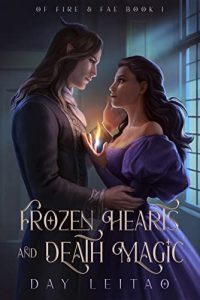 Frozen Hearts and Death Magic by Day Leitao:
Frozen Hearts and Death Magic by Day Leitao:
A forbidden fae kiss could be deadly.
Naia was raised in the shadow of her twin brother, the crown prince, who has iron magic much more powerful than hers. But Naia has wishes of her own. They awaken when she finds a white fae almost dying in the woods. She only heard of them in stories; the dreaded race that razed cities to the ground, killed her grandparents, almost rid Aluria of humans—until they disappeared. Now, almost twenty years later, are they back? Is there another war coming?
But the fae is evasive and secretive—and also alluring and fascinating, more beautiful than anyone she’s ever seen. And then it happens: Naia kisses him—and nothing will be the same again.
In another kingdom, Leah, a necromancer princess, has to find a husband in less than four days, during the gathering, when royals from all over Aluria meet. Her family makes it very clear that she can pick any prince she wants—except one: Naia’s brother. And it turns out that he’s the one; the one who makes her heart beat faster.
Meanwhile, war looms over the land. One of the kingdoms is amassing immense power. The White Fae might be returning. Amidst it all, Naia and her brother struggle with newfound magical powers, family secrets, and most of all, their own treacherous hearts.
What are you willing to lose in order to win?
Only Craze seems to understand the galaxy is about to be lost.
He can no longer keep the evil Quassers contained, and winning the war gets harder. The Quassers join forces with another enemy and become more threatening, more destructive, and more murderous.
Planet after planet falls, and the only hope Craze has is a handful of tiny discoveries that might add up to a viable strategy. But he needs the other planets in the galaxy working with him. So far, everybody is still out for themselves, leaving him to make the gut-wrenching decisions—the deaths of innocents in exchange for everyone’s survival.
Will his efforts yield victory, or does humanity take its last breaths?
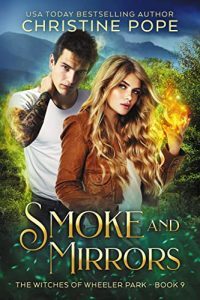 Smoke and Mirrors by Christine Pope:
Smoke and Mirrors by Christine Pope:
When the truth burns away her illusions, only one man can break her fall.
A few months ago, Skyler Fields didn’t believe witches were real. Until she was kidnapped and held prisoner in a facility that forced her to face the fact — she is one. And not just a run-of-the-broom witch with a cool party trick, either. She can control fire with a mere thought, and detect when other witches are nearby.
Freed with the help of a fellow prisoner, she follows her thumb to Arizona, where, she’s told, the Wilcox clan will give her the help she needs. She never expected the first Wilcox she meets to make her pulse race.
With his tall, dark good looks and smoke-gray eyes, Jasper Wilcox could easily distract Skyler from her mission. But she has questions about her heritage, and the buzzing in her head tells her she’s in the presence of a warlock who can get her the answers she so desperately craves.
As Skyler and Jasper work to peel away the lies surrounding the source of her gifts, they are irresistibly drawn together. But the deeper they dig, the greater the danger that the truth will tear them apart…and put the entire Wilcox clan in danger.
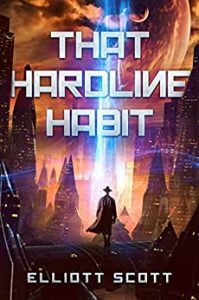 The Hardline Habit by Elliott Scott:
The Hardline Habit by Elliott Scott:
“A Sci-Fi Dresden files with a gritty edge! I couldn’t put it down.”
Felix Lasko always wanted to be a detective, even if it meant working his way up from the bottom of the barrel. Little did he know how deep that barrel would be in the futuristic city Neotopia.
The only client he can find is a Presser—an addict who gets his thrills by flooding his brain with pleasure straight through the wire in his skull. Even if Felix can find the device the man is looking for, getting paid by the junkie is another challenge.
Can he solve the case and get his foot in the door as a detective? Or will he strike out and let his dream slip through his fingers?
Join Felix in Elliott Scott’s hilarious and engaging Sci-Fi Noir Mystery story.
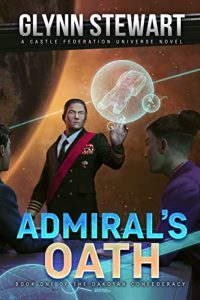 Admiral’s Oath by Glynn Stewart:
Admiral’s Oath by Glynn Stewart:
CASTLE FEDERATION RETURNS
An empire broken by hubris
An officer raised by chance
Oaths that must be honored
Oaths that must be betrayed
Rear Admiral James Tecumseh barely survived his last mission against the Alliance of Free Stars with his reputation and life intact. Under a cloud of suspicion, he has been assigned to a quiet sector far from the front of the Terran Commonwealth’s war with the Castle Federation and its allies.
But when the Federation’s Operation Medusa cripples his nation’s communications and plummets an interstellar empire into silence, Admiral Tecumseh finds himself thrust into command of an entire fleet—and responsible for the safety of billions of innocent souls.
Enemies internal and external alike challenge the nation he is sworn to serve. Duty and honor call him to action to protect the innocent, and the Admiral and his new fleet are called to war once more.
But the darkest treason lurks where no one expects it…
Luca is having an identity crisis. His magic is behaving strangely, his emotions are out of control, and training to be a Master Mage is tougher than he ever expected. The support of his boyfriend, Devin, is one of the few things Luca can depend on.
Then Luca and Devin learn the terrible secret behind the High Council’s smiling public face. The magical dimensions are in the final stages of an ancient curse. Supplies of magic are disappearing. Everyone could die. And the only clue points to Light Mages.
As Luca’s training progresses, some members of the High Council become convinced he is mixed up in the curse. Loyalties are pushed to the limit. And when Luca and Devin finally uncover the truth behind the history of their world, everything they thought they knew about Light Mages is turned upside down.
The price for breaking the curse is a deadly one. But which of them will pay it?
January 29, 2022
Indie Crime Fiction of the Month for January 2022

Welcome to the latest edition of “Indie Crime Fiction of the Month”.
So what is “Indie Crime Fiction of the Month”? It’s a round-up of crime fiction by indie authors newly published this month, though some December books I missed the last time around snuck in as well. The books are arranged in alphabetical order by author. So far, most links only go to Amazon.com, though I may add other retailers for future editions.
Our new releases cover the broad spectrum of crime fiction. We have hardboiled mysteries, cozy mysteries, humorous mysteries, historical mysteries, Jazz Age mysteries, Regency mysteries, 1950s mysteries, paranormal mysteries, science fiction mysteries, noir, crime thrillers, psychological thrillers, legal thrillers, action thrillers, police officers, private investigators, amateur sleuths, spies, FBI agents, lawyers, disgraced profilers, vigilantes, serial killers, the Russian mob, crime-busting witches, crime-busting socialites, crime-busting realtors, crime-busting ghosts, murder and mayhem in New York City, London, New Orleans, Florida, Texas, Alaska, Paris, Mexico, the far future and much more.
Don’t forget that Indie Crime Fiction of the Month is also crossposted to the Indie Crime Scene, a group blog which features new release spotlights, guest posts, interviews and link round-ups regarding all things crime fiction several times per week.
As always, I know the authors at least vaguely, but I haven’t read all of the books, so Caveat emptor.
And now on to the books without further ado:
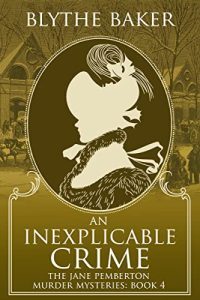 An Inexplicably Crime by Blythe Baker:
An Inexplicably Crime by Blythe Baker:
When a shocking crime endangers the life of a friend, Jane must set aside her suspicions about her Pemberton cousins and try to unravel the motives of a killer. But while Jane hunts one villain, another might be closer than she thinks…
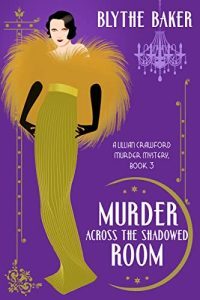 Murder Across the Shadowed Room by Blythe Baker:
Murder Across the Shadowed Room by Blythe Baker:
When Lillian Crawford’s parents sent her to stay with wealthy relatives in England, they hoped she would return a refined lady, having outgrown her headstrong ways. Instead, Lillian and her twin brother Felix stumble headfirst from one dangerous adventure into another.
While attending a concert in the city, Lillian witnesses a deadly crime that sets her off on a new investigation to uncover the identity of a killer who will stop at nothing to silence the one woman who stands in his way…
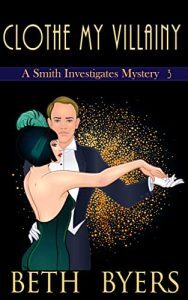 Clothe My Villainy by Beth Byers:
Clothe My Villainy by Beth Byers:
Smith doesn’t pretend to be anything but a man of blunt opinions and a fierce heart. His wife, however, is far gentler, far kinder, and somehow able to see the best parts of him.
Then along comes someone who knows him. And that person is obsessed with Beatrice. Obsessed with a woman who seems to make all the worst parts of Smith better. Obsessed with a person who could love someone like him. It turns out that Smith’s heart is fiercer and more dangerous than even Smith knew, but only when Beatrice is at risk.
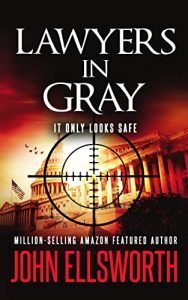 Lawyers in Gray by John Ellsworth:
Lawyers in Gray by John Ellsworth:
Are you selling secrets to the Russians? These ladies and gentlemen Want to Know.
The Department of Justice has hired the law firm of Gray, Soros, Shepherd, and Standish to defend American environmental interests when the Russians come to the US and begin fracking. Gray law suddenly starts losing environmental cases across the US as secret DOJ documents keep turning up in Russian hands. Suddenly Russian fracking is running wild across the United States.
The FBI calls upon a Gray lawyer named Miles Standish to plug the leak of Top Secret documents. Miles accepts the assignment and sets up a secret arm of the law firm that has just kicked him out. He narrows down the suspects to one. Now to prove what he knows. A lawyer from Gray law joins his team. Her name is Inga Kopovsky. He has admired her before, and she has noticed him. They have dinner and make a plan.
Can they expose the Russian and American spies before US drinking water is contaminated and panic takes to the streets? Can Miles Standish outsmart the Russian assassin close behind with her guns?
If you like high-level intrigue and spies on spies, here’s Miles Standish in a desperate chess game with the Russians. Lawyers In Gray is a thriller that will only make you want more in this proposed ten-book Miles Standish series. Grab this one now!
Private Investigator Dev Haskell is summoned by local crime lord Tubby Gustafson to look into the inner workings of financier Casper Trickle. It seems Gustafson is looking to invest. Dev contacts former friend, with benefits, Heidi Bauer. He’s just met Melissa Donnelly on line and surprisingly she seems interested in him. There’s just on problem, Melissa’s ex-husband, Jeremy Lawrence, a stalker with a well deserved restraining order. Dev has his hands full and crime lord Tubby Gustafson is about to add to the pressure. Fortunately, Dev’s Golden Retriever, Morton is on hand to keep things in line. You’d better check it out. Oh, and get comfortable, because you won’t want to put Silencio! down. Enjoy the read!
Faricy is America’s hottest new mystery writer and Dev Haskell is one of the looniest and most enjoyable characters inhabiting the world of fictional private investigators out there today.
FBI Agent Angel Blondeaux is the focus of a man the press has labeled the Blindfold Killer. With each victim, she receives the call informing her where the dead body is to be found. The New Orleans Police have no choice but to enlist her help in his capture.
However, phone calls are only the beginning. This man wants more from Angel than just conversation. He wants her to be a part of his world. As Angel is pushed to her limits, will she stay safe and follow the NOPD rules, or will she play right into his hands?
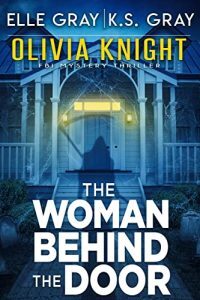 The Woman Behind the Door by Elle Gray:
The Woman Behind the Door by Elle Gray:
“YOU ARE LIVING A LIE. Everything about you is a lie…”
This is a story about an ordinary woman, a mother of two.
To most women, to most mothers, her life is relatable in every way.
Except behind closed doors her truth comes with unimaginable consequences.
Amid a night of fun and festivities, Isabella Walker found herself alone with a bold masked man at her front door.
Unable to fight off her would-be abductor, the mother of two, soon found herself a victim of an extraordinary and grim circumstance.
FBI agent Olivia Knight has investigated her fair share of bizarre cases.
When she and Brock are called to the suburbs of Hidden Hills to investigate a strange abduction. Olivia quickly realizes that there’s more to this case than a mere kidnapping.
Why was Isabella Walker targeted?
Is there more to this housewife and mother than meets the eyes?
What is the truth behind the missing pieces of her past?
As more questions arise and more questions remain unanswered.
Olivia finds that to solve this case, to uncover the truth,
she’ll have to go undercover and face the Grim Reaper himself.
Unfortunately, behind closed doors there are secrets that are worth taking to the grave…
 Ghostly Problems by Lily Harper Hart:
Ghostly Problems by Lily Harper Hart:
Harper Harlow-Monroe is settling into married life well. Her biggest problem is her best friend Zander, who is planning his own wedding. That is until a new resident comes to Harper with a poltergeist problem.
Beckham Lighthouse is located in a unique spot, where the lake and the river meet. When a body washes up on the shore close to the building, talk turns to the poltergeist … which they’re having zero luck dealing with.
Harper’s husband Jared, a local police detective, believes they’re looking for a human culprit. Harper thinks her case and his might be connected. Together, they have to dig deep. Things take a turn when Jared realizes that the new owner of the lighthouse is a familiar face from his past.
Debbie Montlake was an ex-girlfriend he had no problem leaving behind. Her appearance in town right when a murder occurs has him rattled, however, even as Harper starts bonding with the woman.
There’s a killer on the loose and a poltergeist locked in a lighthouse. Are the two things connected? Harper is determined to find out, even if she has to ask for help from a witchy friend to get her answers.
Magic is might, and Harper’s group has magic on their side. Survival isn’t a given, however. Everybody is going to have to work together to solve this one, and even then, the answers might be more than anybody can bear.
He wasn’t looking for trouble. But it was looking for him.
Former black ops specialist Tom Rollins has spent the last six months living in the wilds of Alaska. He’s enjoying the isolation, but his peaceful life comes to an end when he rescues a stranger, Roger Noakes, from two hitmen.
Turns out Roger is a crooked accountant who works for the Russian mafia. Some of their money has gone missing and Roger is the number one suspect.
And now that Tom has rescued Roger, mafia boss Yuri lets it be known that he is on their hit list too. Tom isn’t worried about himself, but he is afraid the mob might try to get to him through people he cares about.
And so he is dragged into a fight he never wanted against a formidable organization which is plotting to blow up the Trans-Alaska Pipeline, causing an ecological disaster in the wilderness he has come to love.
With the threat of large-scale devastation looming, and Yuri’s half-mad henchman Fedorov in hot pursuit, keeping his friends safe and alive will require every one of Tom’s lethal skills.
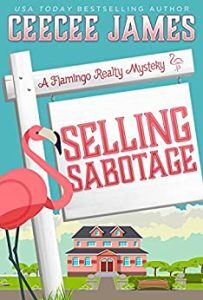 Selling Sabotage by CeeCee James:
Selling Sabotage by CeeCee James:
Stella never expected a visit to the candy factory would turn on its head like this!
In the midst of the holidays, Stella is scrambling to keep up with her house showings. When the great Candy King is killed in the playhouse at one of the homes, Stella’s is shocked to find out it’s Charity Valentines long time friend.
Little did she realize she has more in common with Charity than she realized. As Stella is unwillingly dragged into the investigation, she discovers everything isn’t all chocolate bunnies and ever-lasting gob-stoppers. She must fight to save the chocolate factory before it’s too late.
Check out the Flamingo Realty series that has readers saying, character-driven mystery that’s full of clean fun. Between bookstores, library, a bed and breakfast, and spooky mansions, the Flamingo Realty mysteries deliver cozy suspenseful whodunits that are both heartwarming and humorous.
A murder committed in front of a million online viewers.
Everyone clicked. Watched. Commented. Shared.
No one intervened.
Desperate for fame and fortune, there’s never been a get-rich-quick scheme housewife Juliet Clay hasn’t chased. When she finally goes viral selling diet shakes, she figures all her dreams have come true. But when her husband ends up dead from poison, Juliet’s dreams become a nightmare and she’s the prime murder suspect.
A sucker for lost causes, defense attorney Cass Leary takes the case to pay forward a favor she owes. Though Cass soon learns this case is more hopeless than most. Juliet made more enemies than friends in town and publicly threatened to kill her husband. Twice. The physical evidence draws a direct line to Juliet as well.
All of Cass’s instincts tell her Juliet might be innocent. The woman is way too smart to act that guilty. Cass becomes convinced the police haven’t dug deep enough. But that alone won’t carry the day in court.
Now it’s up to Cass to expose the truth and stand up to a killer. Even if it’s her next client…
 The Joy of Hex by Amanda M. Lee:
The Joy of Hex by Amanda M. Lee:
Hadley Hunter is living the good life until a group of authors shows up on Moonstone Bay, and one of them clearly has murder on their mind.
Jasmine Riley was the lone female writer in a male-dominated genre, and she was on top of her game. When she winds up dead in the ditch on the highway outside of the city, suspicion turns to her competition. There’s just one problem … the culprit might be supernatural.
Hadley not only finds the body but is injured in the aftermath, catching a glimpse of a door to another world before losing consciousness. Did the head injury cause her to hallucinate, or was it something more?
Galen taps Hadley to be his partner on the case, convinced that’s the best way to keep her from finding trouble. Unfortunately for both of them, plane doors are starting to open all over the island, and with them come monsters from another world. That means trouble continuously finds them.
Plane doors are forbidden on Moonstone Bay, but somebody doesn’t care about the rules. Hadley is determined to find answers … and she gets help in the form of Bay Winchester, a Michigan witch on her honeymoon with FBI Agent Landon Michaels. Together, they start digging … and find that not all monsters are obvious.
Someone is controlling the plane doors. That someone is putting everyone on the island at risk. Hadley is determined to find out who … and stop them. Along the way, she will find new friends … and maybe even the ever-elusive shark shifter she’s been dying to cross paths with.
It’s a meeting of powerful witches and a battle for the ages. Strap in and enjoy the ride.
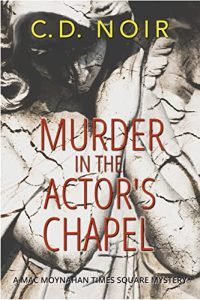 Murder in the Actor’s Chapel by C.D. Noir
Murder in the Actor’s Chapel by C.D. Noir
Fame is fleeting but infamy will haunt you.
A voice from the past breaks into P.I. Mac Moynahan’s pre-dawn workout and drags him back to a world of mortal sin and sacred ritual.
A vintage playbill pinned to the door of a famous church, a bloody corpse staged in a copycat chapel, a priest bound by the seal of the confessional, some slick hacking by his method-acting office manager, and a few yellowed photographs send Mac in search of answers long-buried among the dead.
Broadway legend Leo Albion outlived his fame — but not the one person who hated him enough to track him down and kill him. And as Mac closes in on a motive, if not a suspect, someone is tracking him.
A macabre murder, an elusive killer, a missing motive and a twisted tale of wealth and perversion rival the darkest tragedies of Shakespeare.
It takes a killer to catch a killer.
Logan Wolf was the Behavioral Analysis Unit’s most-respected profiler. Then a serial killer murdered his wife and tore his life apart. Now he’s a vigilante fugitive, hiding from the FBI while he hunts the nation’s deadliest criminals.
When a college student and her boyfriend vanish in West Texas, Wolf suspects the Devil’s Rock killer. But the FBI hasn’t captured the murderer, and after a decade of terror, the trail is turning cold.
Posing as the missing girl’s uncle, Wolf investigates the tiny town of Dusk Corners, the last place anyone saw the students alive. But the local sheriff doesn’t trust Wolf, and it’s just a matter of time before he learns Wolf’s true identity.
To solve the mystery, Wolf must dodge the FBI and power-hungry sheriff. But a killer deadlier than any he’s encountered lies in wait.
In Dusk Corners, danger lurks in every shadow.
An Afghan informer who refuses to speak to anyone but Cutter Grogan.
In Paris.
Where the reception he gets isn’t what he was expecting.
It isn’t an assignment Cutter would normally take on; go to Paris to speak to an informer he knows nothing about. The FBI has ordered him to, however. Which means whatever intel she has, is critical.
Fly in, talk to her, fly out, report back to the Feds.
A two day job, he reckons. No sweat. He loves Paris and looks forward to his visit.
The first inkling he has that the assignment isn’t a walk in the park, are the gunmen who burst through his hotel room.
 Murder at the Mansions by Sara Rosett:
Murder at the Mansions by Sara Rosett:
South Regent Mansions has all the modern conveniences . . . including murder
London, February, 1924. Discreet sleuth for the high society set, Olive Belgrave is delighted with her new flat at South Regent Mansions where she’s made several friends, including the modern career woman, Minerva, who draws a popular cartoon about a flapper for a London newspaper.
But then Minerva comes to Olive for help after catching a glimpse of a disturbing sight—a dead body. At least, that’s what Minerva thought she saw, but there’s not a dead body anywhere in the posh building, and the residents are continuing with their lives as they normally do. Is Minerva seeing things? Is she barmy? Or is there a more sinister explanation?
To help restore Minerva’s peace of mind, Olive investigates her neighbors. They include: society’s “it” girl of the moment, an accountant with a fondness for gadgets, a snooty society matron, and a school teacher turned bridge instructor. Olive uncovers rivalries, clandestine affairs, and hidden jealousies. With dashing Jasper at her side, Olive must discover whose secret is worth killing for.
 The Hardline Habit by Elliott Scott:
The Hardline Habit by Elliott Scott:
“A Sci-Fi Dresden files with a gritty edge! I couldn’t put it down.”
Felix Lasko always wanted to be a detective, even if it meant working his way up from the bottom of the barrel. Little did he know how deep that barrel would be in the futuristic city Neotopia.
The only client he can find is a Presser—an addict who gets his thrills by flooding his brain with pleasure straight through the wire in his skull. Even if Felix can find the device the man is looking for, getting paid by the junkie is another challenge.
Can he solve the case and get his foot in the door as a detective? Or will he strike out and let his dream slip through his fingers?
Join Felix in Elliott Scott’s hilarious and engaging Sci-Fi Noir Mystery story.
 Murder at the Fiesta by Lee Strauss:
Murder at the Fiesta by Lee Strauss:
Murder’s a bash!
When Rosa Reed attends a birthday party in the spring of 1957, the Mexican fiesta turns deadly. It wasn’t how Rosa wanted to celebrate with Detective Miguel Belmonte, nor how she hoped to be introduced to his large complicated family.
Before long, Rosa Reed Investigations is on the case. Can Rosa and Miguel find the murderer before some else dies?
And when will Rosa have time to plan a wedding?
January 28, 2022
The Book of Boba Fett moves over for “The Return of the Mandalorian”
I guess I am doing episode by episode reviews of The Book of Boba Fett now, so here is my take on episode 5, “The Return of the Mandalorian”. Reviews of previous episodes may be found here.
Warning: Spoilers behind the cut!
Pretty much every reviewer agrees that “The Return of the Mandalorian” is the best episode of The Book of Boba Fett so far. There’s only one problem. It’s not really an episode of The Book of Boba Fett, but an episode of The Mandalorian which happens to have been inserted into The Book of Boba Fett. Boba himself doesn’t even appear, though Fennec does, briefly.
Instead, the episode follows around Din Djarin after the end of season 2 of The Mandalorian. Now that Baby Grogu is at Jedi Academy, Din Djarin is no longer on the run and has gone back to the only job he knows, bounty-hunting.
We first see Din Djarin walking into a meat processing plant to arrest its owner. Meat processing plants in the Star Wars universe look a lot like they do in owners, only that staff and owner are Klaatoonians. So far, we’ve had Klaatu and Nikto, so where are the Baradas?
Din wanders into the slimy owner’s office to arrest him. The owner at first denies that he is the person Din seeks and when Din shows him his holographic Wanted poster, he insists that the portrait doesn’t even look like him. Din, however, is not fooled and gives the Klatoonian his “I can bring you in warm or cold” line. The Klatoonian opts for cold and a fight breaks out. Luckily, Din Djarin still has the darksabre, which he took from Moff Gideon at the end of season 2 of The Mandalorian. And while the darksabre may make him king of the Mandalorians, it’s also really handy to slice and dice the muscle of a slimy Klatoonian meat processing plant owner. And so Din cuts several Klatoonians in half, including the meat processing plant owner. Alas, he’s no Jedi and hasn’t had lightsabre lessons, so he also manages to slice his own thigh with the darksabre.
We next see Din Djarin limping out of the office of the meat processing plant owner, what is clearly a severed head wrapped up in a towel in his hand (the darksabre is also really handy for cutting off heads, so Din doesn’t have to cart around the whole bounty), only to find himself faced with the meat processing plant workers, all brandishing meat cleavers and knives. Din is tired, wounded and really not in the mood for any more fighting, so he tells the workers, “Your boss is dead and he has a lot of New Republic credits in there that I have no right to, so help yourself.” The workers decide that loyalty to a dead boss does not pay and help themselves to the money, while Din leaves unmolested.
There is a cut and we now see the place all this is happening and it turns out to be a Ringworld, a bonafide Ringworld. And yes, reader, I squeed. I’m not the only one either. Andrew Liptak describes the same experience in this Polygon article.
Din Djarin limps across this Ringworld, lugging a severed head in a bag, much to the disgust of a female alien who has to share an elevator with him. He struts into some kind of bar/casino. Once again, we see some extras in brightly coloured punk outfits, so apparently a neon punk youth subculture arose in the Star Wars universe after the fall of the Empire. Given the Star Wars universe’s preference for earth tones (for rebels and various planetary populations) as well as black, white and grey (for the Empire), it makes sense that young people wanting to express their rebellion in fashion would go for bright colours, no matter how much some Star Wars purists may hate it.
Din Djarin, however, doesn’t have any time for fashion arguments. He limps right into a separate dining room and dumps the severed head of his bounty onto his employer’s dinner table, recalling a scene in Lois McMaster Bujold’s 1991 novel Barrayar, where Cordelia Vorkosigsan dumps the head of Count Vordarian onto the council table. Din Djarin’s employer is a lot more pleased about having a severed head dumped onto his dinner table than the assorted Barrayaran nobles and promptly invites Din to sit down for dinner (bad idea, since Din only eats in private) and also offers him more jobs. Din Djarin, however, only wants his payment, the exact location where one can descend into the Ringworld’s catacombs to find the hideout of the Mandalorian clan of the Mythosaur crest.
So we follow Din Djarin as he descends into the vertigo inducing catacombs, which are basically on the outside of the Ringworld, seemingly suspended over open space, where he finds none other than the female Mandalorian armourer (Emily Swallow), last seen in season 1 of The Mandalorian, for him. The Armourer has obviously survived her last stand against the Stormtroopers, but then she is a badarse, though her underground clan of Mandalorians has been much decimated and is basically reduced to three members: Din, the Armourer and a portly Mandalorian named Paz Vizsla (played by showrunner Jon Favreau, so Happy Hogan finally got the closest thing to an Iron Man suit), who doesn’t like Din very much.
However, the Armourer is in charge and orders Paz to patch up Din’s leg. Then she takes a look at the goodies Din brought back from his quest, namely the darksabre and . The Armourer does not approve of the lance, since it can pierce beskar armour and be used to kill Mandalorians, though she does approve of the darksabre. The lance, however, must be melted down and turned into armour.
Din Djarin insists that the beskar lance be forged into a piece of armour for a foundling. And not just any foundling either but Grogu. The Armourer points out that Grogu is with the Jedi and no longer a foundling, but Din Djarin is adamant. The Armourer also points out that Jedi are forbidden to have any attachments, whereupon Din Djarin exclaims, “But that is the opposite of our creed. We believe in togetherness and solidarity.”
This is another instance where a Star Wars character points out in universe that much of the Jedi creed is actually crap and actively harmful. Forbidding all attachments is what drove Anakin to the Dark Side in the end. But while Star Wars characters occasionally point out that Jedi beliefs are shit, none of them truly act on it. I thought Rey and Kylo Ren might overcome the light side/dark side dichotomy, when they decide to work together against Snoke in The Last Jedi, but we all know how that ended.
We don’t see what exactly the Armourer makes for Grogu, though chain links suggest a mail shirt. But it hit me that “making the first armour for my foundling” is the Mandalorian equivalent of knitting baby shoes. Once the Armourer is done, she wraps up the mini armour in a red and white knotted handkerchief that has the approximate shape of Grogu’s head. Din stares at at wistfully. He very much misses the child that’s now his.
The Armourer also delivers a neat infodump about the darksabre and its history. And unlike the interminable flashbacks that have characterised this series so far, the capsule history of Mandalore does not bring the plot to a screeching halt. First of all, the Armourer reminds us that the Mandalorians and their culture have survived for thousands of years, while the Empire lasted less than thirty years, a fact that is easy to forget, considering that Star Wars is so very focussed on the Empire.
That darksabre was forged by a Mandalorian Jedi named Tarre Vizsla (ancestor of Paz). “I have met Jedi”, Din Djarin helpfully points out like a kid would say “I’ve met Santa Claus and he’s real.” The person who wields the darksabre is leader of Mandalore – however, it must be won in battle. If gifted rather than won in battle, the darksabre will bring bad luck to the Mandalorians.
The Armourer also knows about Bo-Katan Kryze and unsurprisingly does not approve of her. For Bo-Katan inherited the darksabre rather than win it in battle and this is not “the way”. In fact, the Armourer blames Bo-Katan for the destruction of Mandalore at the hands of the Empire – which is illustrated in an impressive flashback sequence of mushroom clouds over Mandalore and K-2SO droids stalking through the ruins in a scene that is reminiscent of the original Battlestar Galactica (whose effects were famously created by John Dykstra of Star Wars fame), Terminator and The Day After.
Indeed, it’s interesting that The Book of Boba Fett not only draws on works which came out shortly before Star Wars, e.g. outlaw biker movies, the Billy Jack movies, American Graffiti, Lawrence of Arabia, Dune and Italian westerns, but also on works that came out concurrently with or shortly after the original Star Wars trilogy and which often were in conversation with it such as cyberpunk, Quadrophenia, the Vorkosigan novels, Battlestar Galactica, Terminator, The Day After, the Conan films of the 1980s. Because nowadays, it’s easy to forget that Star Wars grew out of the New Hollywood movement of the 1970s and was in conversation both with the SFF and the larger movie and TV sphere of its time.
Meanwhile, the Armourer and her sect, including a young Din Djarin, only survived the destruction of Mandalore, because they had retreated/been exiled to a moon. Of course, as Tor.com reviewer Emmet Asher-Perrin points out, the Armourer isn’t exactly an unbiassed source, since we know that she and her people are Mandalorian fundamentalists and the Star Wars equivalent to an evangelical fire and brimstone preacher who believes that Dungeons & Dragons, LGBTQ people and the covid vaccine are all the work of the devil, so we should take everything she says with a generous grain of salt.
Since Din Djarin did win the darksabre in battle, the Armourer has no issues with him keeping it and even proceeds to give him some fighting lessons, darksabre against beskar hammer. Din is having trouble with the darksabre, since it becomes heavier the more he wields it, which is a lightsabre trait I at least have never heard about. The Armourer tells Din to stop fighting the darksabre. So do lightsabres respond to their wielders in some way?
Now it is a longstanding theory of mine, developed in my teens, that lightsabres can only be used by Jedi and other Force-sensitive people. The initial idea was that lasers are light and light doesn’t just randomly stop in space, so whatever the lightsabre blades are, they’re not lasers. So my teen self came up with the theory that lightsabre blades are focussed Force energy. The Empire Strikes Back blasts that theory to bits when Han briefly uses Luke’s lightsabre to cut open a dead Tauntaun. So if Han, who’s not a Jedi, can ignite a lightsabre, no matter how briefly, that’s it for the theory.
However, “not a Jedi” doesn’t mean “not Force-sensitive” and there are several indications that Han might indeed be Force-sensitive, but was never found by the Jedi due to being a street kid born towards the end of the Republic. After all, fast reflexes are a harbinger of Force-sensitivity and Han has extremely fast reflexes. The fact that Luke is able to perceive Han and Leia being tortured several planets away also suggests that both of them might have been inadvertedly reaching out. Never mind that Han becomes a Force ghost of sorts in the sequel trilogy.
As for other people who are not Jedi wielding lightsabres, Finn does a remarkably good job keeping Kylo Ren at bay before Rey wakes up in The Force Awakens. And Finn is revealed as Force-sensitive in The Rise of Skywalker. I’m not sure about Moff Gideon and Bo-Katan, but then both of them lose the darksabre. As for Din, there are hints that he might be Force-sensitive, too, but more on that later.
It is very obvious that the Armourer could kick Din’s arse and take the darksabre, if she wanted to – she did take out an entire squadron of Stormtroopers, after all – but chooses not to. And yes, the Armourer is awesome, even if she is a religious fanatic.
Paz Vizsla, on the other hand, very much wants the darksabre. After all, his ancestor forged it, so he thinks he has a right to it – even though that’s very much not how things work on Mandalore, as the Armourer explains. Nonetheless, Paz challenges Din to a duel, Din accepts and the Armourer agrees to it. Of course, a duel to the death between two members of your sect is a bad idea, if there are only three Mandalorians left – three that the Armourer approves of, since we know of at least four others. However, this is the way and so Din and Paz fight it out in one of those fights on a narrow and railing-less walkway that Star Wars loves so much.
Initially, things don’t go so well for Din, because he’s wounded, weakened and has trouble with the darksabre, whereas Paz Vizsla is fresh and fueled by anger. However, the tide turns when Paz gloats – with a vibroknife at Din’s throat – that he will exterminate Din’s entire clan. And since Din and Grogu are a Clan of Two, that means Paz has just woken Papa Bear and Din beats and disarms him, though he doesn’t kill Paz.
The Armourer seems pleased with the outcome of the duel, but then she asks Din if he has ever taken off his helmet. Din, of course, can’t say “no”, cause he did take off his helmet, even though it was perfectly justified each time, because it was to receive medical treatment that would save Din’s own life, to infiltrate an Imperial fortress to save Grogu’s life and while saying good-bye to Grogu, the person he loves most in the world. However, the Armourer is a fanatic who knows no exceptions and so she tells Din that he isn’t a Mandalorian any longer. There is a way to redeem himself, but that requires bathing in the pools in the salt mines under Mandalore, mines which – as Din points out – no longer exist.
I really hope that Din will eventually realise that both the Mandalorian and the Jedi way have their share of issues and that he and Grogu will find their own way. However, Star Wars has disappointed me in that regard before, cause whenever it seems as if characters are beginning to question some of the more idiotic rules of their respective groups, the story never follows through, see The Last Jedi.
A crestfallen Din Djarin leaves the Mythosaur Clan and boards a passenger liner, which leads to a hilarious scene where a security droid forces Din to relinquish his many weapons, because “I am a Mandalorian. Weapons are my religion” does not override transport security regulations. The passenger liner is delightfully grubby – the Star Wars universe equivalent to a Greyhound bus or a Baltic Sea ferry rather than a luxury cruise ship. Din has a brief interaction with a Rodian child – and it’s fascinating how Din suddenly notices other children, now he’s a father himself. However, he’s a father separated from his kid, so it only plunges him even further into depression. io9‘s James Whitbrook points out how utterly alone Din Djarin is in these scenes . His clan has disowned him, Grogu is with the Jedi and Din has no one. Kudos also once again to Pedro Pascal who manages to convey Din’s with no facial expressions and only fairly limited dialogue, using body language alone.
The passenger liner is headed to Mos Eisley on Tatooine. Din is here to see Peli Motto, who has sent him a message that she has a replacement for the late lamented Razorcrest, blasted to bits by the remnants of the Empire back in season 2 of The Mandalorian. However, Peli’s proposed replacement for the Razorcrest is not a Clone Wars drop ship like the old Razorcrest, but a battered Naboo Starfighter. Din initially calls it a pile of junk and wants nothing to do with it, but Peli persuades Din to give the Starfighter a chance, once they’ve fixed it up.
So Peli and Din do just that, they repair the Naboo Starfighter, while alternately technobabbling or bantering. Peli thoughtfully even turns the astromech droid port into a child seat for Grogu. These scenes take up about half of the episode and yet watching Din Djarin, Peli Motto or her droids patch up an spaceship is glorious fun and never boring. This is one moment where the tendency of The Book of Boba Fett and The Mandalorian to cast comedians in Star Wars roles comes in handy, because Amy Sedaris is hilarious as Peli Motto and I’m pretty sure most of her dialogue was improvised. Cause I really can’t imagine a Star Wars scriptwriter writing a line like “I dated a Jawa once. They’re fuzzy.” AV-Club reviewer Nick Wanserski is full of praise for Amy Sedaris, as is Tor.com‘s Emmett Asher-Perrin who also points out that they would watch a whole show of Peli Motto cracking jokes while repairing starships. So would I.
However, Peli is not just dating Jawas, she’s also handing them shopping lists for hard to find components. “I don’t ask, they don’t tell”, she tells Din. Din has a request of his own: a component called a cryogenic density combustion booster, which – as Germain Lussier points out at io9 – will look mightily familiar to eagle-eyed Star Wars fans since it’s one of the pieces of trash that Han, Luke and Leia use to try to stop the walls of the Death Star trash compactor. However, the Jawas did not get the component from the Death Star trash compactor, but stole it from a Pyke spice train, which gives Peli the chance to remind us that The Book of Boba Fett does actually have overarching plot, namely the impending turf war between Boba Fett and the Pykes.
But before we can get back to that plot, Din takes the Naboo Starfighter – now all shiny and silvery instead bright yellow, since Din prefers is metal shiny and natural – for a test flight. And so we watch Din swooshing around Mos Eisley and darting through Beggar’s Canyon – where Anakin Skywalker used to go podracing and Luke Skywalker used to shoot at whomp rats. Earlier Star Wars films have made it clear that the reason that Anakin and Luke could fly way too fast through Beggar’s Canyon without going splat is because they are Force-sensitive and have extremely fast reflexes. Din also flies way too fast through Beggar’s Canyon without going splat, suggesting that he, too, might be Force-sensitive.
Din also takes the Naboo Starfighter into orbit, puts on a show for the Rodian kid aboard the passenger liner and promptly runs into a New Republic patrol consisting of our old friend Captain Teva and a new recruit. The patrol harrasses Din about his licence, a missing transponder, unauthorised modifications, etc… Furthermore, Captain Teva recognises Din’s voice and has some questions about the various incidents involving Imperial remnants that Din was involved with. Din responds by flipping a switch – another callback to the hot rods of American Graffiti, which was not only directed by George Lucas, but starred Ron Howard, father of Bryce Dallas Howard, who directed this episode and did a stellar job – and just streaks away, leaving behind two baffled New Republic traffic cops.
Given how the New Republic has been portrayed in The Mandalorian and The Book of Boba Fett, namely as a bunch of incompetents who’s rather harrass random Mandalorians over traffic violations than root out the various Imperial remnants or deal with the fact that crime is running rampant in their territory, it’s no surprise that the New Republic will eventually fail. Because frankly, they are incompetent.
When Din returns the Starfighter to Peli Motto’s – and of course he is going to keep it – he finds Fennec waiting for him, wanting to hire him. However, once Din finds out that Fennec doesn’t want to hire him for a bounty hunting job, but as muscle for Boba Fett, Din tells her that’s on the house, as a thanks for Fennec and Boba helping him against Moff Gideon. However, he first needs to visit a little friend. And we all know what that means, don’t we? Din Djarin is going to visit Grogu and quite possibly pick him up from Jedi Aacademy for good.
Most of us suspected that we would get to see Din Djarin this episode as the muscle Fennec wanted to hire. However, I don’t think anybody expected that we’d get what is basically an episode of The Mandalorian shoehorned into The Book of Boba Fett. Nor did anybody expect that the best episode of The Book of Boba Fett would be the one that’s basically an episode of a completely different series.
If anything, “The Return of the Mandalorian” highlights how much better The Mandalorian is than The Book of Boba Fett. This episode didn’t even have a lot of plot, but the fight scenes, fltght scenes, the banter, the Ringworld setting are all so much better than anything The Book of Boba Fett has given us so far. Daily Dot reviewer Gavia Baker-Whitelaw writes:
Above all, Din Djarin is a more compelling protagonist. He’s defined by consistent emotional goals: Loyalty to his Mandalorian creed, and love for his foundling child Grogu (currently offscreen at Jedi school with Luke Skywalker). His code of ethics also makes more sense than Boba Fett’s directionless new role as a crime boss.
She’s absolutely right, because after two seasons of The Mandalorian, we know who Din Djarin is. We know his devotion to the Mandalorian way, his love for Grogu, his loneliness and his vulnerability. We also know that Din is not in fact the best at what he does. He’s clumsy, cuts himself with his own darksabre and almost gets his arse handed to him by blurggs and a mudhorn. It’s the fact that Din Djarin is very human underneath that shiny armour that makes him such a likeable character.
Meanwhile, we still have no real idea who Boba Fett is. In the original trilogy, he was basically a henchman in a cool looking suit of armour. The prequels showed us his childhood and the tragic (for Boba) loss of his father. The Mandalorian gave us a different, more honourable Boba, who makes himself de-facto ruler of Tatooine. The Book of Boba Fett should have picked up there and told us more about who Boba is and what his motivation is, but it stumbled badly.
Personally, I wonder whether the reason that The Mandalorian is so much better than The Book of Boba Fett is because The Mandalorian is the story that Jon Favreau, Dave Filoni et al really want to tell, whereas The Book of Boba Fett is the story Disney wants them to tell.
Still, let’s hope that the last two episodes of The Book of Boba Fett will maintain the quality of this one, while actually featuring the title character again.
January 24, 2022
Fancast Spotlight: GeekShock
Nominations for the 2022 Hugo Awards are open, so I will be continuing the Fanzine and Fancast Spotlights. For more about the Fanzine/Fancast Spotlight project, go here. You can also check out the other great fanzines and fancasts featured by clicking here.
Today, I’m pleased to feature GeekShock, a podcast from Las Vegas, Nevada, about all things geeky.
Therefore, I’m happy to welcome Kerstan Szczepanski aka Kommander K of GeekShock to my blog today:
Tell us about your podcast or channel.
GeekShock is a podcast about the week-in-geek. We like to think we’re a funny bunch, so we style ourselves as a comedy podcast. We approach geek topics of the day however they may strike us as humorous, but we get serious when serious subjects arise. We talk about movies and television of course, but we also cover subjects in comics, games of all types (video, board, tabletop rpg), geek accessories i.e., toys, collectables, curiosities, and genre literature.
Who are the people behind your podcast or channel?
The Ugly Couch Show was a video show started by four friends from Las Vegas’ Star Trek: The Experience themed attraction. Before the attraction closed in 2008, they had dropped several videos exalting things in geek culture they loved. Mastertorgo, The Famous Paul, and Vlarg were all performers at the Experience, and 80s Jeff, a childhood friend of Torgo’s (they met at Space Camp!) was a bartender at the Experience’s famous Quark’s Bar and Restaurant. While improv actor Famous Paul has moved on, the others continue our current roster along with Deb, a former server at the Experience, Maple Leaf Matt, husband to Deb’s BFF, and myself, Kommander K, another performer from the Experience.
Why did you decide to start your podcast or channel?
We wanted to create the show that we wanted to listen to. The idea started as a talk show pitch for an AM radio station back in 2008. We wanted to create a companion show to go with “The Ugly Couch Show”, but one where we talked about the geeky news of the week rather than the focused subjects of the video show. The podcast worked so well, the video show went on hiatus after a few years.
What format do you use for your podcast or channel and why did you choose this format?
It grew organically over the years, but it was always based on a “geeky news of the week” discussion format. In 2009 there wasn’t much of that around. We have our week-in-geek segment, our popular News You Don’t Give a Shit About, the Week in News, as well as other bits.
The fan categories at the Hugos were there at the very beginning, but they are also the categories which consistently get the lowest number of votes and nominations. So why do you think fanzines, fancasts and other fan projects are important?
Passion is important. Love is important. And it’s the passion and love for all things genre that make the nerd world go round. As geek celebrity Wil Wheaton says, “It’s not about what you love, it’s how you love it.” GeekShock embraces that fully.
In the past twenty years, fanzines have increasingly moved online and fancasts have sprung up. What do you think the future of fan media looks like?
YouTube will continue to dominate for some time, but the explosion of podcasting makes it easier and easier to make, and find, your particular love. Podcast and YouTube cross-pollinating with streaming services like Twitch will continue, and growth in diverse voices will be great in the coming years. Watch for non-English and non-Western media!
The four fan categories of the Hugos (best fanzine, fan writer, fan artist and fancast) tend to get less attention than the fiction and dramatic presentation categories. Are there any awesome fanzines, fancasts, fan writers and fan artists you’d like to recommend?
“Talking Scared” a horror literature podcast.
Matthew David Surridge is one of the premier fantasy bloggers we have. He was unfairly hurt by the Sad Puppies years ago. He wasn’t a part of the movement, and in no way agrees with their politics, so he turned down the Hugo nom he got with the Puppies shenanigans. He should be much wider read than he is.
James Maliszewski of Grognardia is a wonderful historic pulp and tabletop rpg blogger who had a hiatus but has returned. Check him out!
Where can people find you?
Our Home: https://geekshockpodcast.com/
Our Facebook: https://www.facebook.com/geekshockpodcast/
Our Twitter: https://mobile.twitter.com/geekshockpod
Thank you, Kerstan, for stopping by and answering my questions.
Do check out GeekShock, cause it’s a great podcast and source of news on all things geeky.
***
Do you have a Hugo eligible fanzine/-site or fancast or a semiprozine and want it featured? Contact me or leave a comment.
January 22, 2022
Of Squeecore and Conan
No, Conan has not been declared “squeecore” yet, though come to think of it, Conan the Cimmerian is a person from a marginalised background who rises to a high position, he’s something of a wish fulfillment character, there is banter and there are plenty of “hell,yeah!” Everything also usually works out for Conan, though not for necessarily for those around him, and there are two Conan stories (“Queen of the Black Coast” and “Beyond the Black River”), which are total downers where everybody not named Conan dies. So yes, maybe Robert E. Howard was writing squeecore some ninety years ago (at any rate, he was definitely writing for the money, i.e. he had the capitalist motive of needing to eat, pay for his car and support his sick mother). Because the definition is so muddled that everything can be “squeecore”.
Talking of “squeecore”, the Rite Gud podcast now has a transcript available of the episode where Raquel S. Benedict and J.R. Bolt attempt define what they mean by “squeecore”, so maybe their muddled points will become a bit clearer.
While on the subject of podcasts, the Geek Shock podcast, which is run by some geeky people from Las Vegas, including some who used to appear in a Star Trek live show there, not only weighs in on the “squeecore” debate, but also gave a lovely shout-out to this blog as well as to Galactic Journey. Geek Shock is a fun podcast, which will also be featured as a Fancast Spotlight here soon, so check them out.
Which brings me to my final link for today. Because I’m also back in 1967 and at Galactic Journey again, where I celebrate the 61st (in Journey time) and 122nd (in regular time) birthday of Robert E. Howard by reviewing Conan the Adventurer, first of the Lancer Conan reprints which have only just started coming out in 1967 and will introduce a whole new generation to Howard’s work in general and Conan in particular and which will also kick the sword and sorcery revival of the 1960s, which was already gradually ramping up through the first half of the decade, into overdrive.
The Lancer Conans are controversial these days, because of the way series editor L. Sprague De Camp not only forced the stories into a chronology that was never intended (Howard wrote the Conan stories out of order, actually beginning with an adventure late in Conan’s career and then going back to a very early adventure), but also mucked about with the actual stories, completed unfinished fragments, turned non-Conan stories by Howard into Conan stories and inserted his and Lin Carter’s own pastiches to fill up perceived gaps in the chronology.
Nowadays, Lin Carter’s and particularly L. Sprague De Camp’s contributions to Conan are viewed very negatively, because De Camp did not really get neither Conan nor Howard and because a lot of his mucking about was highly questionable and his and Carter’s Conan pastiches were often only a pale shadow of Howard’s original stories from the 1930s.
However, the Lancer editions were extremely well packaged. Frank Frazetta’s cover art is iconic and Frazetta’s Conan is the definitive image of the character by now, even though Margaret Brundage, Hugh Rankin and Harold DeLay all illustrated Conan before Frazetta did. The Lancers were also hugely successful, kept Conan from falling into obscurity and introduced him to a whole new generation of readers.
I was absolutely ready to roast De Camp for what he did to Conan – especially since some of the De Camp/Carter solo Conan efforts just don’t match the character from the Howard stories at all. However, it turned out that in early 1967, as the first two Lancer editions had only just come out, De Camp actually hadn’t actually done all that much that was objectionable.
Conan the Adventurer collects three largely unchanged Howard stories (and I don’t object to De Camp removing the occasional bit of racism) and one Howard fragment that De Camp completed, based on Howard’s outline. Both the original Howard fragment and the outline survive and have been reprinted in the Del Rey collection The Bloody Crown of Conan, so we can compare them to De Camp’s effort – entitled “Drums of Tombalku” – and De Camp really didn’t do too badly. He stuck to Howard’s outline and did a decent enough job completing the fragment. “Drums of Tombalku” is still a weaker Conan story and I’m pretty sure Howard abandoned it for a reason, but De Camp can’t be blamed for this.
I will be reviewing Conan the Warrior, the second Conan collection that Lancer put out, for Galactic Journey next month. Initially, both collections were supposed to be reviewed in one post, but it ran too long, so we split it in half. Conan the Warrior collects three novellas and is pure Howard with De Camp only providing the introduction and the bridging bits.
By the time, we get the the pure De Camp/Carter pastiches like Conan the Liberator, Conan of Aquilonia or Conan of the Isles, I’ll happily drag De Camp and Carter for what they did to Conan. And indeed, I was not very kind of Lin Carter when I reviewed his space opera The Star Magicians for Galactic Journey last year.
However, at Galactic Journey it’s January 1967 and by January 1967, L. Sprague De Camp really hasn’t done anything to deserve the reputation he later acquired yet.
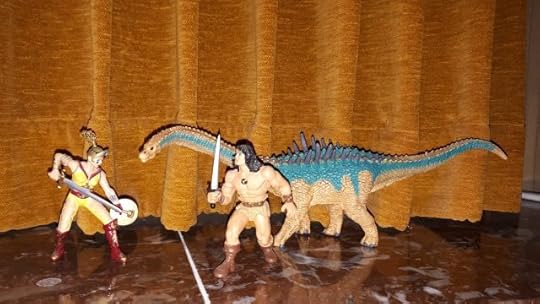
Finally, just because I can, enjoy this diorama of Conan, Valeria and the “dragon” (really a dinosaur) from “Red Nails”.

Conan, Valeria and the “dragon” raid a cookie platter.
January 21, 2022
The Book of Boba Fett Faces “The Gathering Storm”
I guess I am doing episode by episode reviews of The Book of Boba Fett now, so here is my somewhat delayed take on episode 4, “The Gathering Storm”. Reviews of previous episodes may be found here.
Warning: Spoilers behind the cut!
“The Gathering Storm”, the latest episode of The Book of Boba Fett starts off with Boba lying in his bacta tank once again. And we all know what that means by now. It’s flashback time.
And since Boba’s flashbacks still happen in remarkably chronological order, we now get what happened after the Tusken tribe that adopted Boba was slaughtered in the previous episode’s flashback. I’d have assumed that Boba Fett would take on the Nikto biker gang that killed the Tuskens next, but instead we find him spying on Jabba’s former palace, clearly planning to break in. However, there are too many guards and so Boba takes off with his trusty bantha companion into the desert again.
We next see Boba eating that time-honoured Tatooine desert specialty critter on a stick and even feeding some to his trusty bantha (banthas are carnivores?!), when he notes flares going off in the distance. Boba and the bantha (that sounds like a 1960s band) investigate and find Fennec with a gut shot, left for dead, a scene we already saw from a slightly different angle in season one of The Mandalorian.
Boba takes Fennec to a mod parlour on the outskirts of Mos Eisley and pays the modder to fix her and save her life. The Book of Boba Fett takes another detour into Cyberpunk territory here, down to some kind of techno music playing in the mod parlour. I also find it fascinating that there apparently is a sizeable cyber-mod teen subculture on Tatooine – sizeable enough that there are mod parlours catering to them – and that we’ve never seen the slightest hint of this before.
A bit later, Fennec wakes up in the desert, not dead and with a cyborg midriff. She’s even more surprised to find herself in the company of Boba Fett, who’s not dead either, though he’s supposed to be. Boba knows Fennec’s reputation – well, he used to be a bounty hunter and Fennec has a bounty on her head – and makes her an offer. If she helps him recover his ship from Jabba’s palace, he’ll let her go.
So Boba and Fennec scout out Jabba’s palace, while Boba cuddles his trusty bantha, gets licked in the face and then sets the bantha free to make baby banthas. Yes, really, this happens and the look on Fennec’s face is priceless when she watches it. Now Boba’s interactions with the Rancor last episode do show that he clearly has a soft spot for mega-fauna, but the galaxy’s most notorious bounty hunter cuddling a bantha is still a bizarre sight, as Emmet Asher-Perrin points out in their review at Tor.com.
Figuring out how many guards there are inside the hangar bay of Jabba’s former palace is not easy, because the gate always opens only for a few moments. However, Fennec has a drone they send in to map the interior of the hangar bay and the adjacent area. Now Boba and Fennec have a map of the layout of the hangar bay plus the positions of the guards and their patrol schedule, they sneak into the palace to steal the ship that is no longer named Slave-1, since Disney has only just realised that slavery is a bad thing.
Their path into the hangar bay leads through the kitchen, where we see two droid chefs – EV-9D9, whom we saw back in Return of the Jedi, and an unnamed slicing and dicing droid with six arms and a knife or cleaver at the end of each of them. The two droids hear sounds and initially assume that rats of gotten into the kitchen, so they summon the rat catcher. But they quickly realise that these “rats” are human sized, which leads to a hilarious fight scene. Boba knocks out EV-9D9 fairly easily with his gaffi stick, but the multi meat cleaver droid gives him trouble, until Fennec just severs a cable and disables it. However, there’s still the rat catcher, a strange robotic bunny/cat hybrid, which Boba chases around the kitchen, since the droid does the wise thing and deactivates itself. We briefly see it in a present day scene, suggesting that it survived. After the bulbs of fennel briefly glimpsed in Aunt Beru’s kitchen in A New Hope, we can also now add red cabbage and leek to the tally of vegetables that inexplicably seem to grow somewhere on Tatooine or at least are imported in reasonably fresh condition.
One of the things that makes the Star Wars universe so great is the beautiful absurdity and weirdness found in every single corner of it. And the kitchen fight involving a a knife-twirling food preparation droid and a robotic bunny/cat hybrid fighting a cyborg imperial ex-assassin and a bantha cuddling Mandalorian who’s lost his armour and his ship is just one example of the wonderful weirdness of this universe, as Nick Wanserski points out in his review at the AV-Club.
Once they’ve dealt with the kitchen droids and make their way into the hangar proper, Boba and Fennec take out two Gamoreans (the same Gamoreans that follow Boba along everywhere, though these Gamoreans wear shirts?), but then Weequay reinforcements arrive. Fennec puts her sniper skills to good use, while Boba dashes abaord Slave-1 (until it officially gets another name, I will continue to call it that) to get the old girl off the ground. Of course, Slave-1 is too big for Jabba’s hangar bay and scrapes the walls, before Fennec takes out the counterweight of the gate with a well-aimed shot, allowing them to escape. Boba promised Fennec that she could leave, once they’d gotten Slave-1 back, but Fennec decides to stick around, curious what Boba will do next.
What Boba Fett does next is finally wreak vengeance on the Nikto biker gang who had wiped out his Tusken friends. The scene is less spectacular than I had expected. Given the Billy Jack parallels, I expected a prolonged martial arts battle, but instead Boba just guns down the Niktos with Slave-1. I also wonder why he didn’t at least leave one Nikto alive to question, since both Boba and Fennec agree that it’s rather unlikely for a Nikto biker gang to take out a whole tribe of Tuskens.
After wreaking righteous vengeance on the Niktos, Boba wants to get his armour back, starting at the place where he last saw it, namely the sarlacc pit. Boba clearly doesn’t remember that the Jawas stole his armour, so he decides to fly Slave-1 close enough to the sarlacc’s mouth to allow him to shine a light inside and see if there’s any beskar armour lying around there. This manoeuvre almost goes wrong, when the sarlacc wakes up and decides to gobble up Slave-1 and only Fennec deploying a sonic grenade saves them – and coincidentally also kills the sarlacc.
However, it’s only after Boba has bodily descended into the sarlacc pit that he is satisfied that is armour truly isn’t there. He also rinses off the sarlacc’s stomach acid with water, which confused not only Tor.com‘s Emmet Asher-Perrin, but me as well, because that is not how you neutralise acid.
Later that night, Boba outlines his plans for the future by the campfire (come to think of it, there are a lot of campfire scenes in this episode and in The Book of Boba Fett in general). Of course, we already know what those plans are. He wants to kill Bib Fortuna, because Bib supposedly betrayed him. Nick Wanserski is as confused about this as I am, because while Bib Fortuna may be unpleasant, slimy and a jerk, it’s not his fault that Boba ended up in the Sarlacc pit. And then, once Bib Fortuna is out of the way, Boba Fett wants to become a crime lord.
Fennec correctly points out that Boba Fett is a bounty hunter, so why is he suddenly looking at a midlife career change? Boba Fett replies that he’s sick of working for bad bosses, who couldn’t care less about his welfare and will only get him killed. After all, Boba Fett almost got killed, while working for Jabba, and his Dad got killed while working for Darth Sidious. Boba believes that he can do better and also invites Fennec to be his partner. Fennec initially declines. She’s perfectly willing to do jobs for Boba, but she’s an independent contractor. Boba then offers her something none of her other employers have ever offered her. Loyalty and a share in his ill-gotten gains. He also tells Fennec that his time with the Tuskens – which apparently was years, though it only seems like a few months – taught him the importance of having a tribe.
Those aims seem straightforward enough, but they still don’t make a whole lot of sense. For starters, as Tor.com‘s Emmett Asher-Perrin wonders, why Boba needs the Tuskens to teach him the importance of community and having a tribe, when he’s a Mandalorian, i.e. a member of a people with a strong sense of community. Even if Jango was an outcast due to collaborating with the very Empire that would eventually wipe out Mandalore, one would expect him to have taught young Boba about “the way”.
io9‘s James Whitbrook is confused whether Boba wants to set up a criminal empire or a labour union for bounty hunters. And if it’s the latter, how does Boba’s outfit differ from e.g. Greef Karga’s bounty hunter guild seen in The Mandalorian?
At the Guardian, Chris Edwards wonders what’s the matter with Boba Fett, since he barely seems like the mysterious villain we met in the original trilogy some forty years ago. Instead, we get labour leader Boba who befriends Tuskens, cuddles banthas, suddenly hates the very Empire he used to work for and wants to become a crime lord to implement better working conditions for bounty hunters. It’s not even that kinder, gentler Boba is a bad character, but he’s not the character we know and there is little explanation given for the change beyond his sojourn among the Tuskens.
We don’t get any answers, because at this point Boba wakes up – naturally for once – and is informed by a helpful droid attendant that his wounds are now healed and he will need no more bacta treatments. So I guess this was the last flashback, which is a good thing, especially since this flashback took up some 75 percent of the episode.
Back in the present, the newly healed Boba decides to head to Mos Espa to show his face in town. He winds up in Garza Fwip’s bar, where Black Krrsatan is getting drunk and decides to beat up a group of Tradoshan gamblers. Apparently, there is an ancestral feud between the Tradoshans and the Wookies, but Black Krrsatan’s behaviour still feels oddly personal. Garza Fwip tries to talk down Black Krrsatan by pointing out that he has nothing to prove, because everybody knows that he is the arena champion, but that times have changed and that since the demise of the Empire gladiator fights and gratuitous violence are no longer acceptable. Also, if Black Krrsatan will kind set down the Tradoshan gambler, all his drinks – and Black Krrsatan is clearly badly drunk – will be on the house. Black Krrsatan does set down the Tradoshan, though not without ripping his arm off. Then he leaves and Boba goes after him to offer him a job.
Black Krrsatan clearly accepts, because the next time we see him, he is standing guard at a banquet that Boba and Fennec are giving for the local crime bosses, Jabba’s old lieutenants, who have divided Mos Espa amongst themselves. Boba points out that he does not want to muscle in on their territory, but that it would be in everybody’s best interest, if they were to band together to fight the Pyke Syndicate who are gearing up for war. One of the crime bosses, a Tradoshan, points out that they are making good profit selling the Pyke Syndicate’s spice. But Boba insists that the Pykes want to take over “our planet” (nice that Boba considers Tatooine his home now, but it’s not his planet). And since the crime bosses don’t want to help, Boba proposes a compromise: He’ll handle the Pykes himself and the other crime bosses will just stay out of it and promise not to side with the Pykes. Two of the three crime bosses think this is an acceptable proposal, only one guy, a member of a species I don’t recognise, wonders why he and his people shouldn’t just kill Boba and take his territory. At this point, a Rancor claw extends through the floor grating, which quickly shuts up the crime boss.
The episode ends with the crime bosses and their entourage departing. Fennec wants to know whether Boba thinks they can be trusted. Boba replies that he trusts that they will act in their own best interest.
And that’s it. We’re past the halfway point of this seven episode series and the plot has barely moved forward in this episode at all, because “The Gathering Storm” should have been called “The Endless Flashback”, since three quarters of it are flashback. At least, this flashback is more entertaining than the previous ones, if only because it has plenty of Fennec Shand and I’m here more for Fennec than for Boba Fett. However, as Daily Dot reviewer Gavia Baker-Whitelaw points out, this episode doesn’t tell us anything knew, since we already knew that Boba rescued Fennec and had her injuries healed/repaired and that she’s loyal to him as a result.
Don’t get me wrong, this episode was a lot of fun, but I still have no idea what Disney is trying to do with this show. And at past the halfway point, we should have some idea where it’s going or even what the purpose of the whole thing is.
January 20, 2022
The Book of Boba Fett takes to “The Streets of Mos Espa”
I’m still not convinced that The Book of Boba Fett is truly worth doing episode by episode reviews, but here is my much delayed take on episode 3, “The Streets of Mos Espa”. Reviews of previous episodes may be found here.
Warning: Spoilers behind the cut!
This latest episode of The Book of Boba Fett opens in the present day – hurray – with Boba Fett seated on his throne, while ex-torture droid 8D8 delivers a lecture about the criminal empire of the late Jabba the Hutt. After Jabba’s demise, Bib Fortuna could not hold all of Jabba’s business in Mos Espa and therefore had to rely on other gangs to keep the peace. As a result, Mos Espa has been divided into three quarters (“Mos Espa est omnis divisa in partes tres”) controlled by different gangs and the Mayor Mok Shaiz (whom we met last episode) is making deals with all of them. Though both Boba and Fennec agree that the Mayor isn’t the true power here and didn’t send the assassins. Someone else did, likely the Hutt twins whom we met last episode as well.
This little infodump is interrupted by the arrival of a petitioner, played by veteran character actor Stephen Root who has been in literally everything. The petitioner introduces himself as a watermonger and obsequiously informs Boba Fett that no one is respecting him. For it turns out that someone has been stealing the watermonger’s water.
Boba Fett’s incredulousness that someone is making money selling water and that people would steal it is linked to Boba growing up on water-logged Camino, but it still doesn’t make any sense. As a bounty hunter, Boba has travelled all over the galaxy and knows that different planets are different. Plus, he has spent several years on Tatooine at this point, working for Jabba, living with the Sand People, trying to take over the place. Unless Boba Fett is a complete idiot – and he’s not – he should have realised by now how precious water is on Tatooine. In fact, he could probably make more money by importing water from Camino or the “Bremerhaven in space” planet from season 2 of The Mandalorian to Tatooine than by being a crime lord.
Boba knows that the watermonger is baiting him, but nonetheless he, Fennec and the two Gamoreans (who still don’t get names) head to Mos Espa to sort out the situation with the water thieves. They quickly locate the water thieves, too, since they’re enjoying the ill-gotten gains of their criminal activities in the middle of the street. And the water thieves turn out to be cyberpunk mod kids on tricked out floating Vespas. Yes, really.
Star Wars has always borrowed from all sorts of genre and non-genre films, novels, TV-shows, subcultures. The Disney+ Star Wars shows drive this “everything and the kitchen sink, too” approach to the max. The cyber-modifications of the street kids are clearly a nod to Cyberpunk, a subgenre from which Star Wars borrowed surprisingly little (maybe the neon-drenched streets and clubs of Coruscant in the early scenes of Attack of the Clones), probably because Cyberpunk always positioned itself as a countermovement to Star Wars and its imitators (as well as to 1970s feminist SFF). Still, Cyberpunk is just another movement of the past now and therefore ripe for borrowing.
However, the more surprising influence here is that that of the Mod subculture of the 1960s, as Nick Wanserski accurately notes in his review at the AV-Club. The body modifications and the punk outfit of the female gangleader may be borrowed from Cyberpunk, but the tricked out Vespas and the parkas and outfits worn by the male gang members are pure Mod. Indeed, my initial reaction was “Oh, it’s Star Wars does Quadrophenia.”
At Vice: Motherboard, Gita Jackson reports that quite a few fans dislike the street kids on their Vespas, though Tor.com reviewer Emmet Asher-Perrin likes their style and swagger, even though they wonder how a gang of unemployed and clearly poor kids can afford such swanky rides and fashions. Probably the same way they were able to afford the water, by stealing.
Gita Jackson points out that George Lucas was part of the California car racing culture in the 1960s and that this comes through in many of his films, from THX 1138 via American Graffiti, which very much is a film about California car culture in the late 1950s and early 1960s, to Star Wars and beyond. Space mods on floating Vespas is absolutely the sort of thing Lucas would come up with. Quadrophenia actually came out two years after Star Wars, though the album it was based upon dates from 1973. But even if Lucas has not seen Quadrophenia, he very likely was aware of the Mod subculture. As an influence, it’s not at all unlikely.
Boba Fett confronts the street kids about stealing water, whereupon the kids reply that the watermonger is charging extortionate prices. “This is the workers’ quarter,” Boba says, sounding like every grumpy suit wearing adult ever, “Why are you not working?” The street kids reply that there are no jobs to be had, so Boba hires them on the spot. The watermonger is of course outraged, but Boba pays him off and also warns him to charge fair prices for his water.
So Boba Fett’s criminal empire now consists of himself, a former Imperial assassin, two Gamoreans, an ex-torture droid and four cyber-mod street kids on space Vespas. It’s not wonder no one takes him seriously.
Boba, Fennec and the new recruits return to Jabba’s castle, where Boba goes to sleep in his bacta tank and we get – groan – another flashback. At least this one is mercifully short.
We see Boba, now apparently a fully fledged member of the Tusken tribe that found him, getting on a bantha and riding off to Mos Eisley (nice cameo by Peli Motto from The Mandalorian and her pit droids in the background) to collect payment from the Pyke Syndicate (the masked fish people seen last episode as well as in Solo) for allowing their drug train to cross the Tusken territory. The Pyke leader is quite willing to pay protection money – it’s part of the business – but he’s not willing to pay twice. And he is already paying the Nikto biker gang that harrassed Fixer and Cami last episode for right of way in the same territory. “Settle it among yourself,” the Pyke leader says.
When Boba returns to the Tusken camp, he sees smoke on the horizon. Turns out the Nikto biker gang has decided to settle the matter first by killing all the Sand People. Now I predicted that the Sand People would probably all die horribly, though I hadn’t epxected it to happen so soon. Though maybe this will mean fewer flashbacks.
I already said last week that Boba Fett seems to be doing a Billy Jack movie in the flashbacks and this episode made the parallels even clearer with the Tusken tribe standing in for the town of Big Rock in The Born Losers and the Freedom School in Billy Jack. The Nikto gang literally are the titular biker gang from The Born Losers or the terrible townspeople from Billy Jack. The flashback scenes even borrow the earnest if problematic white saviour aspect of the Billy Jack movies, where Billy Jack is supposedly half-indigenous, but played by white actor/director Tom Laughlin, who made those movies out of an earnest desire to draw attention to the injustices facing Native Americans. Meanwhile, The Book of Boba Fett sidesteps the white saviour issue, since Boba is played by a Maori actor. Plus, it has not borrowed the weird rape obsession from the Billy Jack movies, which can only be a good thing.
Once again, the Billy Jack movies are unexpected but not unlikely influences to show up in Star Wars. Because strange – and they are very strange indeed – as they are, the Billy Jack movies were huge counterculture hits in the early 1970s and George Lucas was definitely aware of them and very likely at least saw them. And besides, you just know that Lucas liked biker movies. He may even have known Tom Laughlin, since both were indie directors doing their own thing and telling the stories that mattered to them in early 1970s Hollywood.
As everybody who has seen the Billy Jack films or indeed any film ever expected, Boba lights a funeral pyre for the bodies and then sets off to wreak righteous vengeance on the Nikto biker gang. At this point, the flashback is rudely interrupted by the Wookie bounty hunter Black Krrsatan, who clearly dislikes interminable flashbacks as much as the rest of us and just rips Boba out of his bacta tank to slap him around. As an assasination attempt, this one is none too impressive, because while Boba may have been a match for a Wookie while in armour, he clearly is no match for Black Krrsatan while in underpants.
Boba gets his bacon saved by the cyber-mod kids and the Gamoreans who try to save him from Black Krrsatan, so Boba did get his money’s worth for hiring them. That said, as Nick Wanserski points out, the fight scene looks clumsy and stagy. And indeed, none of the action scenes in The Book of Boba Fett have looked particularly impressive. Which is odd, because Disney clearly has the money to do impressive action scenes and we know that Robert Rodriguez (who directed this and at least one other episode) and writer/showrunner Jon Favreau know how to do action.
Black Krrsatan is holding his own until Fennec opens the trap door to the Rancor pit, which would have been more impressive if we hadn’t seen someone dropped into the Rancor pit only last episode. Still, the Rancor pit has a new inhabitant now.
Shortly after Black Krrsatan’s attack, who shows up at Boba’s doorstep but the Hutt twins introduced last episode? They arrive on their giant litter carried by approximately twenty people, which makes me wonder just how they got there in the first place. Were they just carried through the desert? And why don’t they use some kind of motorised transport? The litter may make sense in a city like Mos Espa, but not in the open desert.
The Hutt twins explain that they are very sorry for siccing Black Krrsatan on Boba and that they no longer want his territory, since someone else has laid claim to hit, which would mean war. “And war…” the female Twin says, “…is bad for business.” So the Hutt twins decide that Tatooine is a worthless rock and depart. They don’t want Black Krrsatan back either, since Wookie bounty hunters who can’t even manage to kill a guy in his underwear clearly aren’t in great demand. Boba lets Black Krrsatan go with some friendly advice from bounty hunter to bounty hunter to be more discerning in his choice of employer. That’s really rich, coming from Boba Fett who worked for Jabba the Hutt and the Empire among others and whose Dad Jango worked for Darth Sidious. I actually expected Boba to offer Black Krrsatan a job – as he did with the Gamoreans and the cyber-mod kids – but Boba just lets him go.
Furthermore, the Hutt twins bring a “Sorry we tried to kill you. Nothing personal” gift. Because the empty Rancor pit is a sad state of affairs, so the Hutt twins have brought along a Rancor and his trainer, played by none other than Danny Trejo (director Robert Rodriguez real life cousin), as a housewarming gift, as io9 reviewer James Whitbrook puts it.
Boba is clearly pleased, since he always wanted a Rancor. The Rancor is placed in the pit, while Boba has a chat with the Rancor keeper, who informs him that Rancors are very complex creatures, bond with their owners and keeper and are only aggressive, when they are trained to be. This would be pretty ridiculous – this giant people-eating monster is a very emotionally complex creature – if not for the scene in Return of the Jedi where Jabba’s Rancor keeper cries bitterly over the body of the creature after Luke kills it.
Boba’s new Rancor is just a baby and wears blinders, because – so Danny Trejo explains – Rancors imprint on the first person they see. So Rancors are basically baby ducklings? Danny Trejo also explains that the witches of Dathomir have trained Rancors as riding animals, which thrills Boba, because he clearly wants to ride on a Rancor (and will before the series is through). So Boba Fett’s criminal empire has grown to encompass himself, an Imperial ex-assassin, an ex-torture droid, two Gamoreans, four cyber-mod kids on tricked out Vespas, a baby Rancor and Danny Trejo.
The Hutt twins said that someone else has laid claim to Jabba’s old territory, someone who clearly bothers them more than Boba Fett. So Boba quickly deduces that his rival must be Mok Shaiz, the mayor of Mos Espa. So Boba and his entourage (sans Danny Trejo and the Rancor) go to town once again to see the mayor. The mayor is supposedly very busy, but when Boba and Fennec break into his office, they find the office empty. Mok Shaiz has vanished and his annyoing Twi’lek major domo is just about to escape in a landspeeder that looks like a vintage Cadillac. The cyber-mod kids set off in pursuit, which leads to an amusing chase through the streets of Mos Espa, complete with everybody running over market stalls. In Hollywood, street chases only take place on market days and participants get points by hitting each and ever stall.
In the end, the Twi’lek’s landspeeder buried in fruit (Emmet Asher-Perrin points out that these fruits are called meiloorun). Being a coward, the Twi’lek blurts out that the mayor is working for the Pyke Syndicate and the Pykes are coming to Tatooine.
Shortly thereafter, one of the cyber-mod kids is lurking at the spaceport, where a large group of masked Pyke troopers emerge from the belly of a starship. So the Hutt twins and Mok Shaiz were only red herrings and the Pykes are the real big bad, both in the flahback (cause you can bet the Pykes sicced the Nikto bikers on the Tuskens) and in the present day, setting up the conflict for the remaining episodes. Which is fair, I guess, except that I don’t find the Pykes particularly impressive. Not that Mok Shaiz is impressive either and the Hutt Twins are weird rather than impressive.
Three episodes in, The Book of Boba Fett still seems to have no idea what it wants to be. Does it want to be a Billy Jack movie in the Star Wars universe? Does it want to be a gritty crime drama about a turf war, a kind of Breaking Bad or Peaky Blinders in the Star Wars universe? Does it want to be King Conan, only starring Boba Fett? Any one of those would have been interesting choices, but the show mashes all of them together, resulting in an unholy mess.
Also, as Gavia Baker-Whitelaw points out at The Daily Dot, The Book of Boba Fett also comes up against restrictions imposed by Disney+’s insistence on being “family-friendly”, whatever that means. Therefore, even though Boba Fett lously declares that he wants to be a crime boss, he doesn’t really act like one. Instead, he’s more of a grumpy Dad who adopts random strays and wants to rid Tatooine from Hutts, Pykes and corrupt mayors. Which is fine, it’s just not what anybody expected of a Boba Fett show. The desire to be family-friendly also probably explains why all the assassins, whether it’s the Order of the Night Wind or Black Krrsatan, are so bad at their jobs.
The elements for a fun Star Wars show are all there: A fan favourite lead, a talented cast, great visuals, cool creatures, a hodge-podge of genre influences. But unlike The Mandalorian, which shared many of the same ingredients, The Book of Boba Fett doesn’t really come together so far.
Since this review has been delayed, the next episode has already been made available, so maybe the story will finally come together.
January 19, 2022
How To Define a New Subgenre/Trend: The Speculative Epic and an Addendum to the “Squeecore” Debate
I initially put this as an ETA under one of the previous posts in the so-called “squeecore” debate. However, I think it deserves it’s own post.
Lincoln Michel has also gotten into the business of defining a new subgenre/trend as well in his Counter Craft newsletter and that new subgenre/trend is – no, not “squeecore” – but the speculative epic, which is the term Michel has coined for overwhelmingly literary works with multiple timelines, one of which often takes place in some dystopian future.
Lincoln Michel has noted a definite trend here, though it is not really a new thing. Cloud Atlas by David Mitchell, which appears to be the protoype, came out in 2004, and Henderson’s Spear by Ronald Wright, which has past and present timelines, but now future ones, came out in 2001. Green Darkness by Anya Seton, which also has multiple intertwining timelines, predates both and came out in 1972. And there are even earlier examples such as The Star Rover by Jack London from 1915 (a really fascinating book, which influenced H.P. Lovecraft and Robert E. Howard among others) or The Ship of Ishtar by A. Merritt from 1924. You could probably also make a case for Dorothy Quick’s unjustly forgotten Patchwork Quilt series, which appeared in Unknown in the early 1940s. However, those works are scattered examples and what unites them is mainly a fascination with past lives and reincarnation.
That said, Lincoln Michel is right that there seem to be more books featuring multiple intertwining timelines right now, that they share certain characteristics such as addressing social issues (though you could argue that The Star Rover address the issue of prisoner abuse) and that they mainly come from the literary side of the pond rather than from the genre side, whereas the predecessors were mostly genre writers. In addition to Cloud Atlas, the examples Michel gives are Appleseed by Matt Bell, To Paradise by Hanya Yanagihara, Cloud Cuckoo Land by Anthony Doerr, Sea of Tranquility by Emily St. John Mandel and How High We Go in the Dark by Sequoia Nagamatsu.
However, I’m not just linking to this article because I’m interested in literary trends, subgenre formation and genre taxonomy (though I am), but also because Lincoln Michel demonstrates how to identify and define a new trend/potential subgenre without being a jerk about it.
The article is structured as follows: I have identified a trend and here are some examples of people who have noticed it, too, as well as some examples of works that fit into that trend. I propose this name for it (a name that’s not derogatory) and it has this characteristics. It’s also part of a larger trend towards genre-bending fiction.
What this article notably does not include is snarky asides against authors and books that Lincoln Michel does not like, buzzwords like “neoliberal” and issues that are worth addressing but have nothing to do with the subgenre in question. Also, Michel offers solid criteria for defining speculative epics and not criteria that are so vague that they apply hundreds of things up to and including Shakespeare. And yes, I am aware that I have just retroactively claimed Jack London, A. Merritt, Anya Seton and Dorothy Quick (and Robert E. Howard, whose James Allison series was directly inspired by The Star Rover) for the speculative epic, but they all wrote works which match some of the characteristics given and could be considered predecessors to this genre/trend.
Woll “speculative epic” catch on as a term for this trend/movement/subgenre? I don’t know, though personally I like the term and shall use it, crediting Michel, for works that fit. However, I suspect that Lincoln Michel’s essay will not generate nearly as much attention as the debate about “squeecore”, even though his points are solid and he makes them without being a jerk about it.
January 17, 2022
More on the Squeecore Debate
The so-called “squeecore” debate is still raging and I’ve linked to various entries, responses and comments as ETAs in my other post.
However, I think this point deserves a separate post, for and highlights a post by someone named Gemini Dreams, which according the Raquel Benedict of the Rite Gud podcast, who kicked off this whole debate, best sums up the point she wanted to make.
Here is what Gemini Dreams identified as elements of “squeecore”:
It’s overwhelmingly preoccupied with setting up “Hell yeah!” “epic” moments rather than, say, organic character growthCharacters (or sometimes just the author) are extremely genre aware and constantly draw attention to the tropes of the story they occupy, without ever actually breaking the fourth wall. This genre-awareness usually isn’t used in any interesting way, and is fairly surface-level observation (i.e. red shirts, final girl, etc.)Characters are extremely sarcastic and have a lot of lazy banter, because it’s easier to write for the author than “real jokes” or “real humor” (though the podcast, I would criticize, fails to define what that means)Related to the last point: A huge discomfort with intense emotions; major emotional moments are undercut with “Whedonesque” interruptions like “Well that happened” to give a kind of glib distance from really fully experiencing the momentOver-explanation of everything happening rather than leaving room for interpretationMetaphors that fall apart after any scrutinyA “neoliberal” preoccupation with making sure that everything works out for all the characters, often including converting the villains into alliesA huge preoccupation with mainstream pop culture references, but especially to movies and TV
Now this definitely describes elements that you can find in some contemporary SFF works, though it’s a writing style rather than a genre/movement. Because you could apply those stylistic choices to almost any genre and indeed, you find a similarly glib and snarky tone in other genres. What used to be called “chick lit” often had a very similar tone, for example.
Ironically, Raquel Benedict or rather the Redditor Gemini Dreams also capture a lot of what always annoyed me about Joss Whedon’s writing. Yes, I was a Whedon skeptic, since before it was cool to hate Whedon, and I got quite a bit of flak for pointing out issues with Whedon’s work, such as that Whedon tended to undercut emotional moments, because he didn’t know when to hold back the snark, ten to fifteen years ago. I also pointed out that Whedon’s characters were not nearly as feminist and progressive as they were supposed to be, which went down just about as well as you can imagine. Though at the time I didn’t know that the terrible abuse of pregnant Cordelia, which made me stop watching Angel for good, was actually a case of terrible abuse of the pregnant Charisma Carpenter in real life, since abuse of pregnant women on screen was such a common motif at the time.
And talking of Joss Whedon, this lengthy profile/interview/apologia about the man by Lila Shapiro just came out today in Vulture. If you don’t want to read the thing (and it’s long), the short version is that everybody else but Whedon is to blame for his issues, particularly his mother. You know, the same mother who inspired his feminism.
Except for the abuse of “neoliberal” (What’s neoliberal about everything working out for the characters? Especially since everything does not work out for many people in purely neoliberal systems) the Reddit summary actually makes sense of describing what precisely it is that bugs Raquel Benedict and J.R. Bolt about contemporary SFF.
Though Benedict and Bolt are still railing against a particular writing style rather than against a whole subgenre. And yes, for better or worse, Whedon did have a lot of influence on contemporary SFF writers, because Buffy, Angel and Firefly were immensely popular in the genre community, though – and this is often forgotten – none of them were huge ratings hits and Firefly was canceled after half a season.
Besides a Whedonesque style is far from universal in contemporary SFF. Of the 2021 Hugo Best Novel finalists, only Network Effect and Harrow the Ninth (and the 2020 finalist Gideon the Ninth even more so) feel somewhat Whedonesque. And while Murderbot and ART are snarky, Martha Wells is a much better writer than Whedon ever was and the stories themselves are not all that Whedonesque. And The Locked Tomb novels are heavily about grief and trauma in spite of the snarky tone of Gideon the Ninth. Of the short fiction finalists, the only story that has a light, somewhat bantery tone is Vina Jie-Min Prasad’s “A Guide to Working Breeds” and that’s not very Whedonesque. In Best Series, you also have Murderbot again as well as John Scalzi’s Interdepency, which really does have a lot of snark and banter, but is also about a universe threatening disaster. That’s four of thirty fiction finalists (five, if you count Murderbot twice) to which these complaints vaguely apply, which is hardly an overwhelming majority.
Of Hugo finalists of recent years, Becky Chambers’ Wayfarers series feels pretty Firefly influenced, but then Chambers herself has stated that she hadn’t watched Firefly when she wrote A Long Way to a Small, Angry Planet. Besides, while Wayfarers may share certain thematic similarities with Firefly, Becky Chambers’ writing style isn’t all that Whedonesque. And yes, there are the usual complaints about John Scalzi’s Redshirts (What is it about that book that has left- and right-wingers so up in arms?), but Redshirts came out ten years ago, so I would hardly call it current.
Besides, Whedon did not invent banter, snark and “Hell yeah” moments. You can find banter and snark in 1930s screwball comedies (not SFF) and banter, snark and “Hell yeah” moments in Fritz Leiber’s Fafhrd and Grey Mouser stories, only that Leiber was a much better writer than Whedon. In my article in issue 59 of Journey Planet about Fritz Leiber’s “Ill Met in Lankhmar”, I described how brilliantly Fritz Leiber oscillates between lighthearted banter and utter despair and overwhelming grief in the same story. Also note that Leiber never undercuts the desperation of the second half of the story with misplaced humour like Whedon would.
There’s also a lot of banter and pop culture references in Marvel Comics from the 1960s to the 1990s. It’s particularly notable in Spider-Man, but banter and pop culture references wer pretty much the Marvel house style for a long time to the point that I’ve always suspected that this was where Whedon got it from. This is probably also why he was such a good fit for the first Avengers movie, which is IMO the best thing Whedon ever did.
So in short, it seems that Raquel Benedict and J.R. Bolt are mainly annoyed by Joss Whedon inspired writing in SFF, which is perfectly acceptable (and as I said, I’ve never been a huge Whedon fan myself, so I sympathise to a certain degree). However, the observation that Joss Whedon’s style, combined with the Marvel house style, which probably influenced Whedon, had a notable impact on SFF writing does not mean that this Whedonesque writing is the dominant mode of SFF writing some ten years after Whedon’s career peaked. Also, having read some of Raquel Benedict’s tweets, she’s not someone who should complain about other people being too snarky. Though to be fair, I have no idea what her actual writing is like.
For some reason, the “squeecore” debate also got confused with superversive SF and noblebright fantasy, two actual SFF movements, albeit of limited impact, which have been around for a while and come from a somewhat conservative (noblebright) to far right (superversive) corner of the genre.
Noblebright was coined by fantasy author C.J. Brightley in 2016 as a counterpoint to grimdark fantasy. Superversive SF is older and was coined by Tom Simon all the way back in 2003, though it did not catch on as a term until the Sad and Rabid Puppies debarkle of 2014-2017, when the Christian conservative wing of the Puppies claimed the term for itself. Meanwhile, what Benedict and Bolt dub “squeecore” comes from a left progressive corner of the genre (and is hated by the superversives), though it’s not radical enough for Benedict and Bolt. And yes, it’s quite ironic that once again the traditionalist puppies and this year’s re-iteration of the anti-nostalgics hate the same books, though they would never agree on anything else.
Finally, the whole “squeecore” debate also got tangled up with a very valid and important argument about the very real financial, geographic and accessibility barriers that keep many people from attending workshops like Clarion and Viable Paradise as well as Worldcon and other big cons.
And no, you don’t need to attend those workshops to have success (and quite a few who attend Clarion or Viable Paradise are never heard from again), but it does help to get past the first round of slush readers. Ditto for having been on a panel or shared a drink with an editor at Worldcon. It’s not a guarantee for success and you still have to write a good story/novel that fits what the editor is looking for, but it does help and we should acknowledge this.
There are scholarships for the workshops and various initiatives to make cons more accessible to people from various marginalised backgrounds, which is a big step forward. And cons going hybrid or fully virtual because of the pandemic also helps people to attend and participate who otherwise couldn’t have gone. We could still do more to remove barriers to access to the genre and this is an important conversation to have. But unfortunately, it got tangled up with “We don’t like those books/stories and here’s why.”
Cora Buhlert's Blog
- Cora Buhlert's profile
- 14 followers


